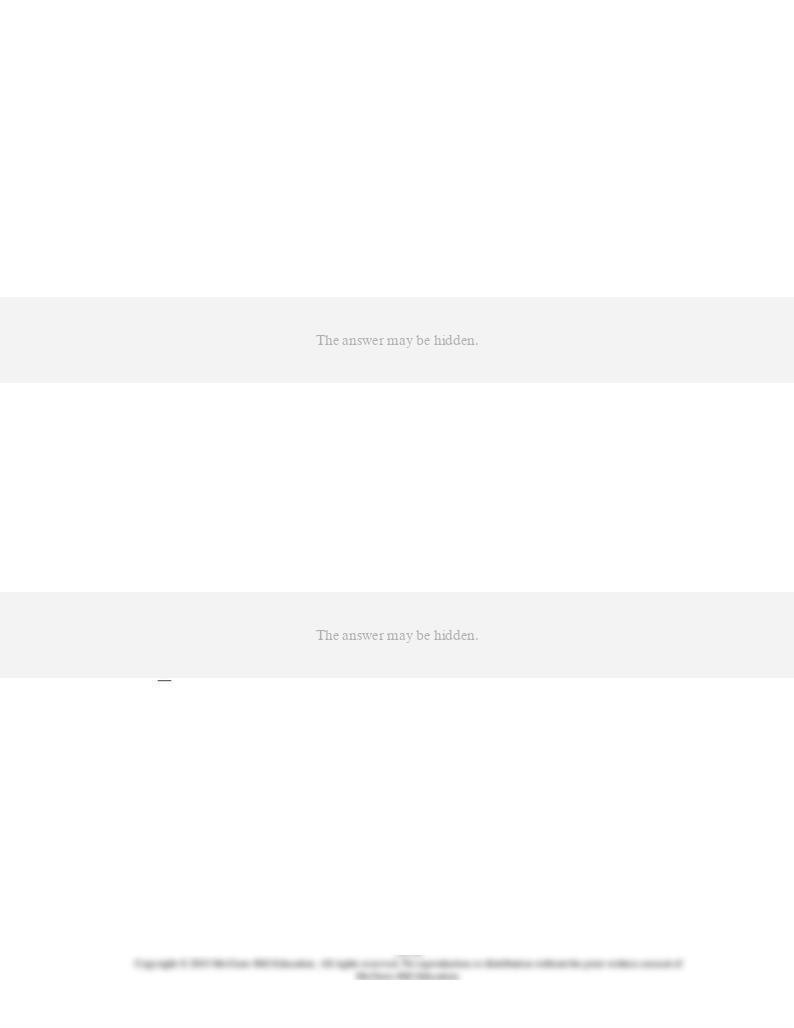
Chapter 32 Money, Banking, and Financial Institutions Answer Key
Multiple Choice Questions
1.
To say money is socially defined means that:
AACSB: Analytic
Accessibility: Keyboard Navigation
Blooms: Understand
Difficulty: 2 Medium
Learning Objective: 32-01 Identify and explain the functions of money.
Topic: Functions of money
2.
Money functions as:
AACSB: Analytic
Accessibility: Keyboard Navigation
Blooms: Remember
Difficulty: 1 Easy
Learning Objective: 32-01 Identify and explain the functions of money.
Topic: Functions of money
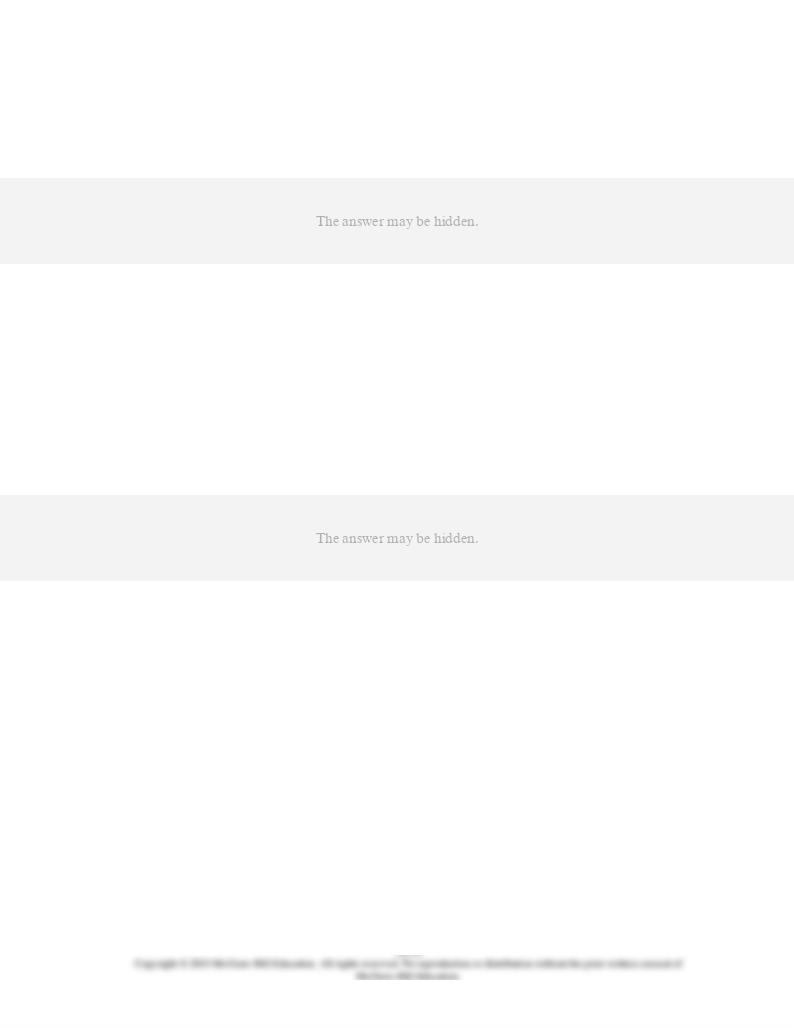
3.
If you are estimating your total expenses for school next semester, you are using money
primarily as:
AACSB: Reflective Thinking
Accessibility: Keyboard Navigation
Blooms: Apply
Difficulty: 2 Medium
Learning Objective: 32-01 Identify and explain the functions of money.
Topic: Functions of money
4.
If you place a part of your summer earnings in a savings account, you are using money
primarily as a:
AACSB: Reflective Thinking
Accessibility: Keyboard Navigation
Blooms: Apply
Difficulty: 2 Medium
Learning Objective: 32-01 Identify and explain the functions of money.
Topic: Functions of money
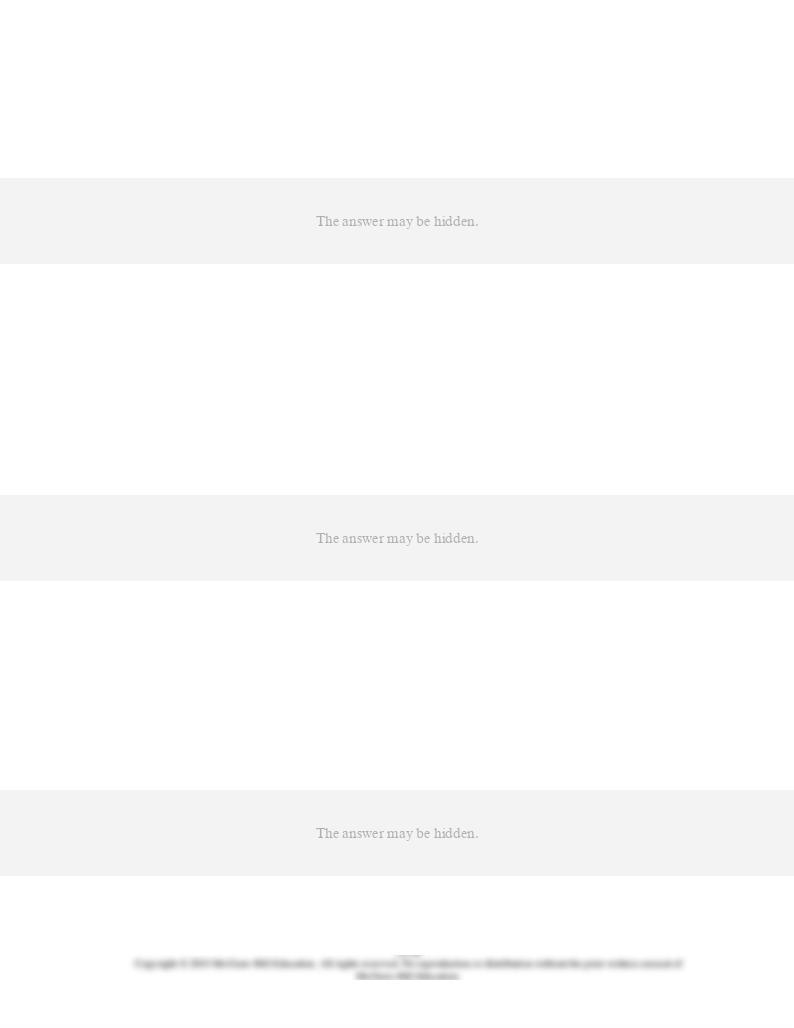
5.
If you write a check on a bank to purchase a used Honda Civic, you are using money
primarily as:
AACSB: Reflective Thinking
Accessibility: Keyboard Navigation
Blooms: Apply
Difficulty: 2 Medium
Learning Objective: 32-01 Identify and explain the functions of money.
Topic: Functions of money
6.
A $70 price tag on a sweater in a department store window is an example of money
functioning as a:
AACSB: Reflective Thinking
Accessibility: Keyboard Navigation
Blooms: Apply
Difficulty: 2 Medium
Learning Objective: 32-01 Identify and explain the functions of money.
Topic: Functions of money
7.
Stock market price quotations best exemplify money serving as a:
AACSB: Reflective Thinking
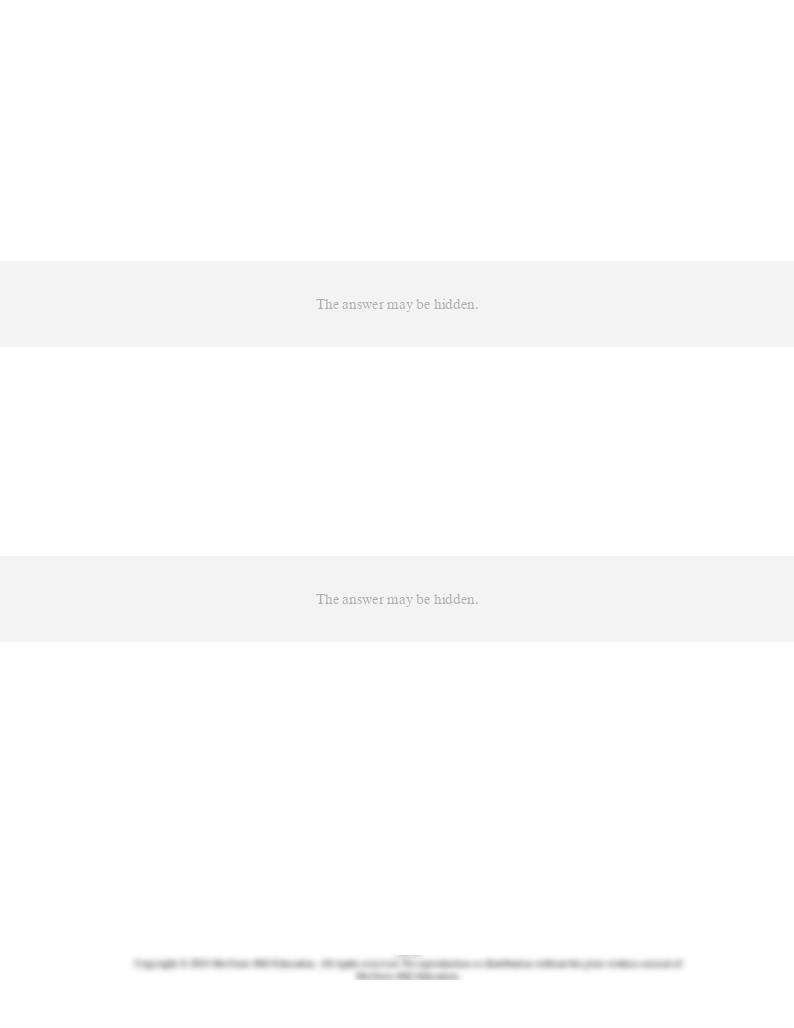
Accessibility: Keyboard Navigation
Blooms: Apply
Difficulty: 2 Medium
Learning Objective: 32-01 Identify and explain the functions of money.
Topic: Functions of money
8.
Purchasing common stock by writing a check best exemplifies money serving as a:
AACSB: Reflective Thinking
Accessibility: Keyboard Navigation
Blooms: Apply
Difficulty: 2 Medium
Learning Objective: 32-01 Identify and explain the functions of money.
Topic: Functions of money
9.
When economists say that money serves as a medium of exchange, they mean that it is:
AACSB: Analytic
Accessibility: Keyboard Navigation
Blooms: Understand
Difficulty: 2 Medium
Learning Objective: 32-01 Identify and explain the functions of money.
Topic: Functions of money
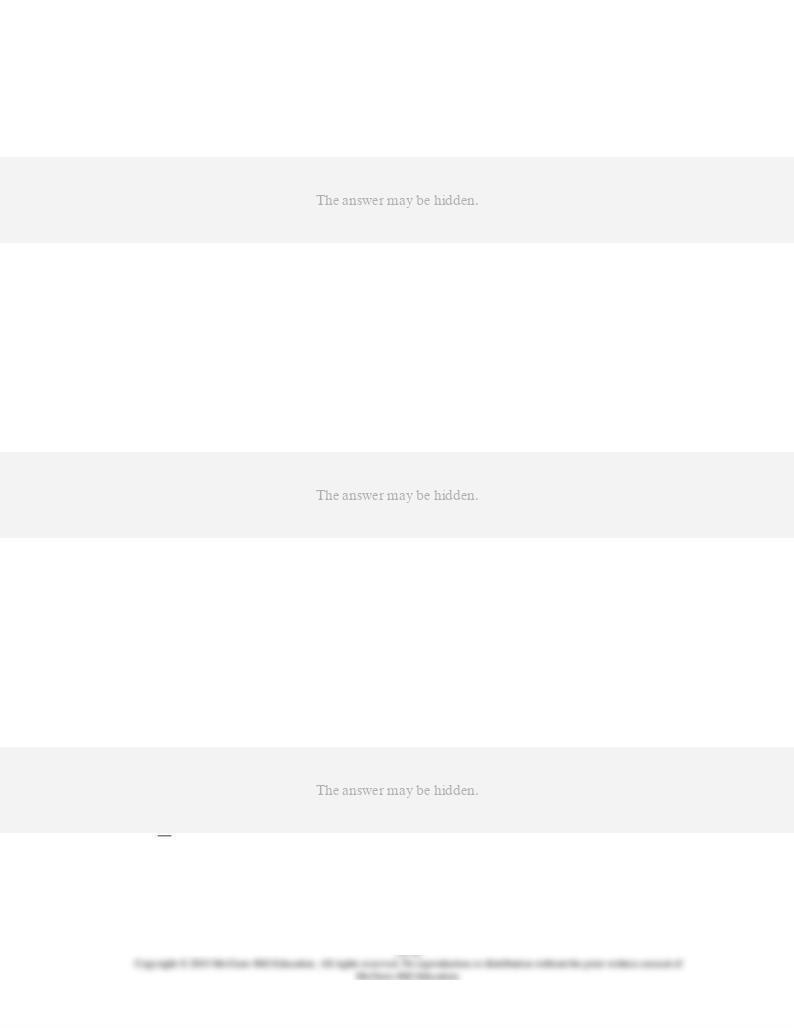
10.
When economists say that money serves as a unit of account, they mean that it is:
AACSB: Analytic
Accessibility: Keyboard Navigation
Blooms: Understand
Difficulty: 2 Medium
Learning Objective: 32-01 Identify and explain the functions of money.
Topic: Functions of money
11.
When economists say that money serves as a store of value, they mean that it is:
AACSB: Analytic
Accessibility: Keyboard Navigation
Blooms: Understand
Difficulty: 2 Medium
Learning Objective: 32-01 Identify and explain the functions of money.
Topic: Functions of money
12.
The paper money used in the United States is:
AACSB: Analytic
Accessibility: Keyboard Navigation
Blooms: Remember
Difficulty: 1 Easy
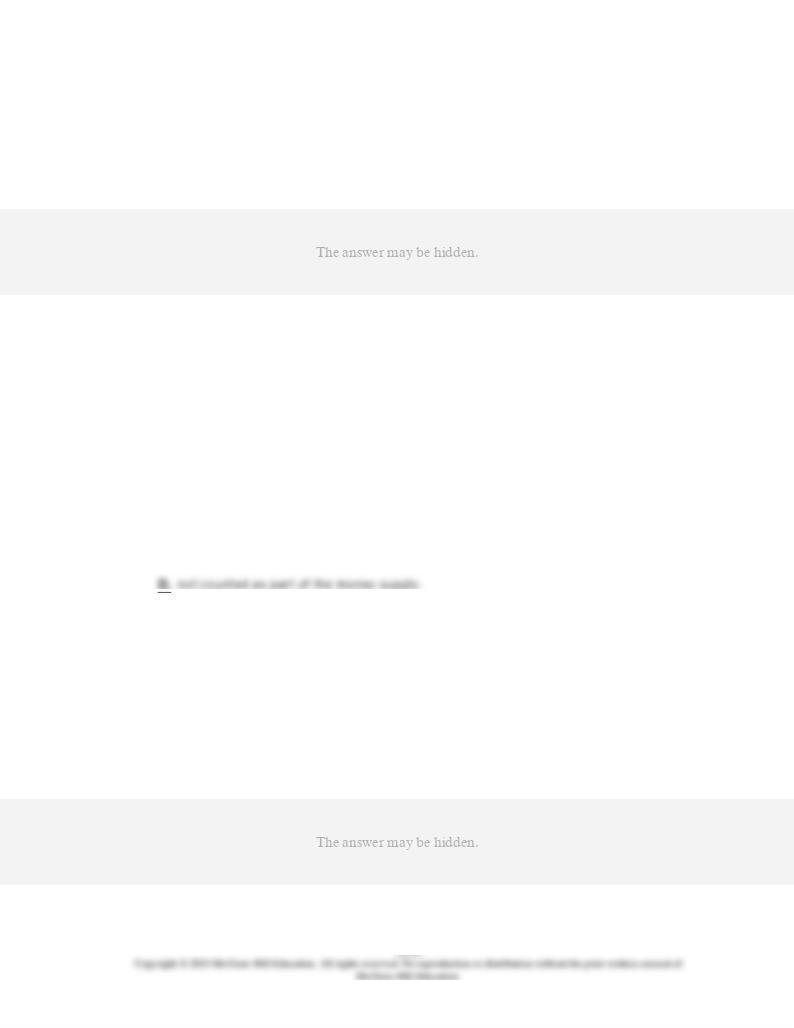
Learning Objective: 32-02 List and describe the components of the U.S. money supply.
Topic: Components of the money supply
13.
In the United States, the money supply (
M
1) is comprised of:
AACSB: Analytic
Accessibility: Keyboard Navigation
Blooms: Remember
Difficulty: 1 Easy
Learning Objective: 32-02 List and describe the components of the U.S. money supply.
Topic: Components of the money supply
14.
Currency held in the vault of First National Bank is:
A.
counted as part of
M
1.
B.
counted as part of
M
2 but not
M
1.
C.
only counted as part of
M
1 if it was deposited into a checking account.
AACSB: Analytic
Accessibility: Keyboard Navigation
Blooms: Remember
Difficulty: 1 Easy
Learning Objective: 32-02 List and describe the components of the U.S. money supply.
Topic: Components of the money supply
15.
Checkable deposits are classified as money because:
AACSB: Reflective Thinking
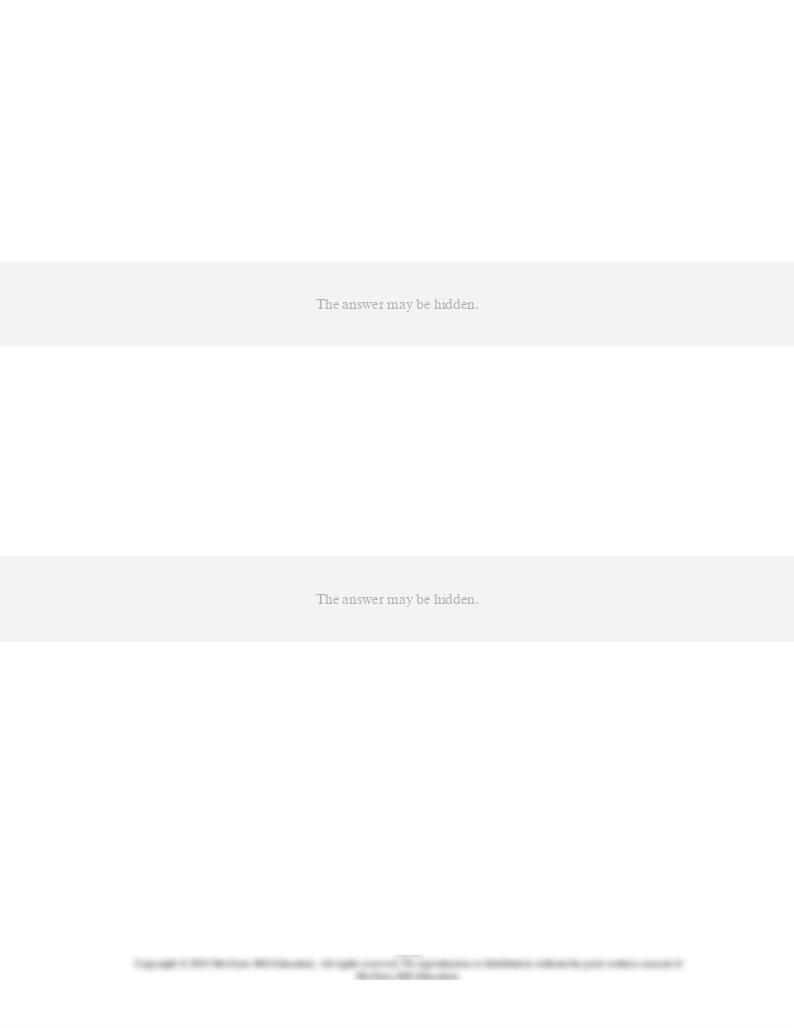
Accessibility: Keyboard Navigation
Blooms: Understand
Difficulty: 2 Medium
Learning Objective: 32-02 List and describe the components of the U.S. money supply.
Topic: Components of the money supply
16.
Currency (paper money plus coins) constitutes about:
AACSB: Analytic
Accessibility: Keyboard Navigation
Blooms: Remember
Difficulty: 1 Easy
Learning Objective: 32-02 List and describe the components of the U.S. money supply.
Topic: Components of the money supply
17.
In February 2013, the supply of money (
M
1) in the United States was about:
AACSB: Analytic
Accessibility: Keyboard Navigation
Blooms: Remember
Difficulty: 1 Easy
Learning Objective: 32-02 List and describe the components of the U.S. money supply.
Topic: Components of the money supply
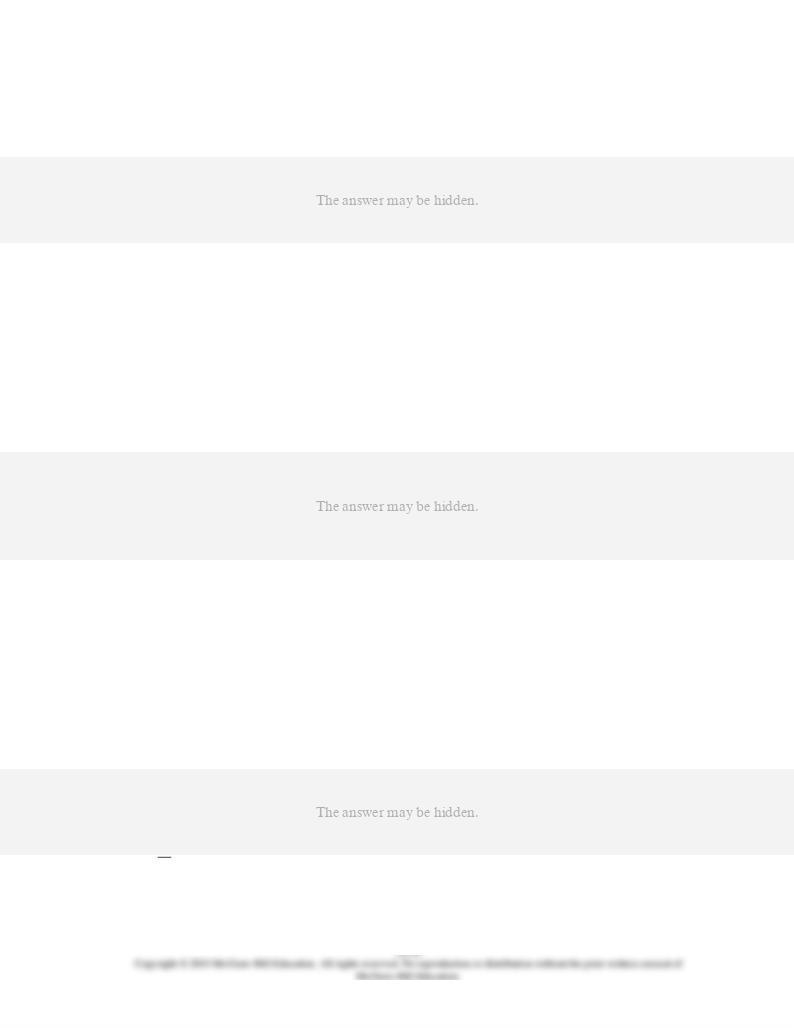
18.
To say that coins are "token money" means that:
AACSB: Analytic
Accessibility: Keyboard Navigation
Blooms: Remember
Difficulty: 1 Easy
Learning Objective: 32-02 List and describe the components of the U.S. money supply.
Topic: Components of the money supply
19.
In defining money as
M
1, economists exclude time deposits because:
AACSB: Reflective Thinking
Accessibility: Keyboard Navigation
Blooms: Understand
Difficulty: 2 Medium
Learning Objective: 32-02 List and describe the components of the U.S. money supply.
Topic: Components of the money supply
20.
Which of the following is
not
part of the
M
2 money supply?
AACSB: Analytic
Accessibility: Keyboard Navigation
Blooms: Remember
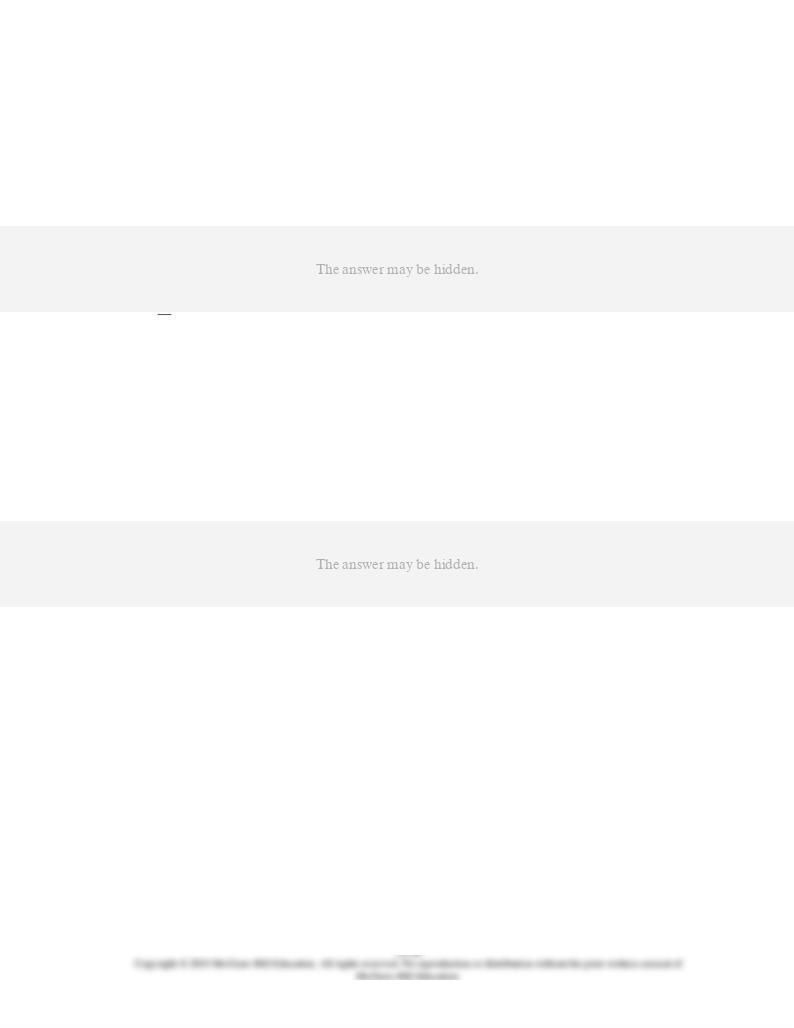
Difficulty: 1 Easy
Learning Objective: 32-02 List and describe the components of the U.S. money supply.
Topic: Components of the money supply
21.
The
M
2 money supply includes:
AACSB: Analytic
Accessibility: Keyboard Navigation
Blooms: Remember
Difficulty: 1 Easy
Learning Objective: 32-02 List and describe the components of the U.S. money supply.
Topic: Components of the money supply
22.
A checking account entry is money because it:
AACSB: Reflective Thinking
Accessibility: Keyboard Navigation
Blooms: Understand
Difficulty: 2 Medium
Learning Objective: 32-02 List and describe the components of the U.S. money supply.
Topic: Components of the money supply
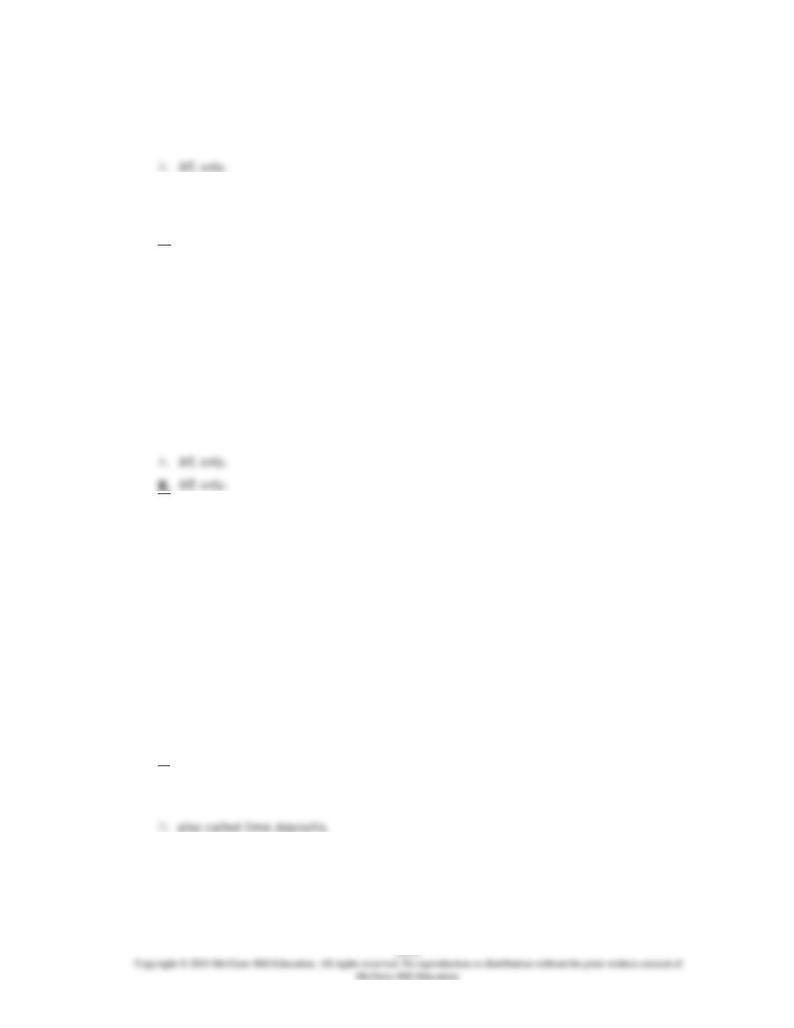
23.
Currency in circulation is part of:
B.
M
2 not including
M
1.
C.
neither
M
1 nor
M
2.
D.
both
M
1 and
M
2.
AACSB: Analytic
Accessibility: Keyboard Navigation
Blooms: Remember
Difficulty: 1 Easy
Learning Objective: 32-02 List and describe the components of the U.S. money supply.
Topic: Components of the money supply
24.
Money market deposit accounts are included in:
C.
neither
M
1 nor
M
2.
D.
both
M
1 and
M
2.
AACSB: Analytic
Accessibility: Keyboard Navigation
Blooms: Remember
Difficulty: 1 Easy
Learning Objective: 32-02 List and describe the components of the U.S. money supply.
Topic: Components of the money supply
25.
Checkable deposits are:
A.
included in
M
1.
B.
not included in either
M
l or
M
2.
C.
considered to be a near money.
AACSB: Analytic
Accessibility: Keyboard Navigation
Blooms: Remember
Difficulty: 1 Easy
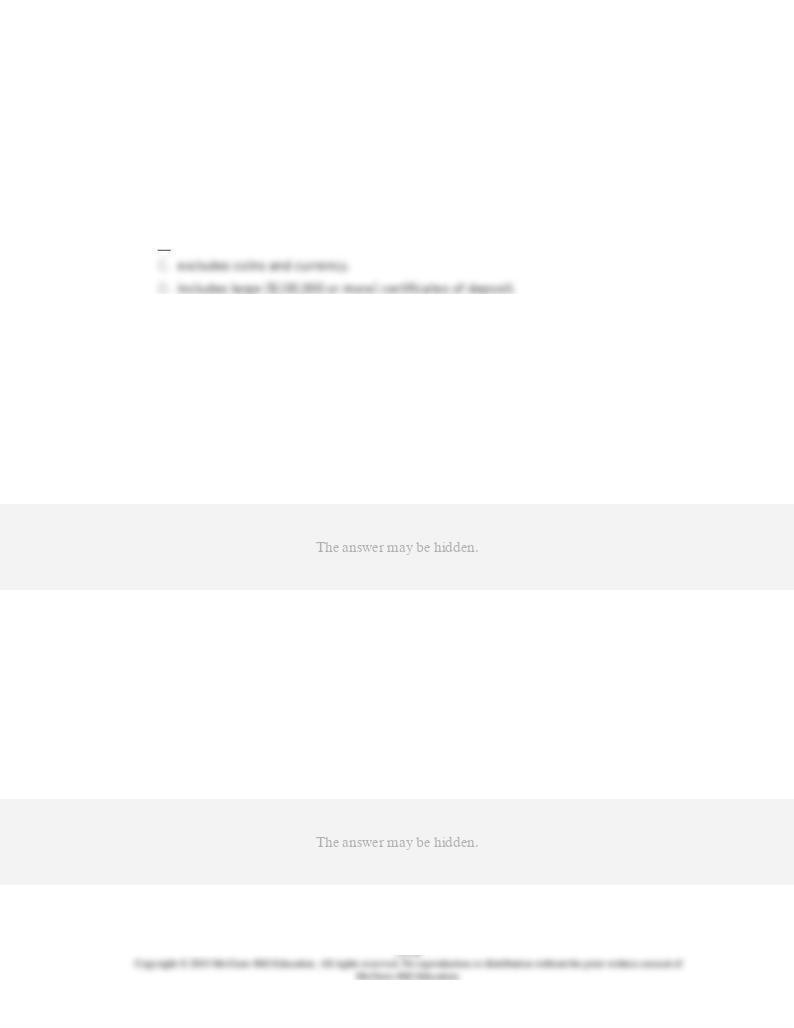
Learning Objective: 32-02 List and describe the components of the U.S. money supply.
Topic: Components of the money supply
26.
The amount of money reported as
M
2:
A.
is smaller than the amount reported as
M
1.
B.
is larger than the amount reported as
M
1.
AACSB: Analytic
Accessibility: Keyboard Navigation
Blooms: Remember
Difficulty: 1 Easy
Learning Objective: 32-02 List and describe the components of the U.S. money supply.
Topic: Components of the money supply
27.
The largest component of the money supply (
M
1) is:
AACSB: Analytic
Accessibility: Keyboard Navigation
Blooms: Remember
Difficulty: 1 Easy
Learning Objective: 32-02 List and describe the components of the U.S. money supply.
Topic: Components of the money supply
28.
Paper money (currency) in the United States is issued by the:
AACSB: Reflective Thinking
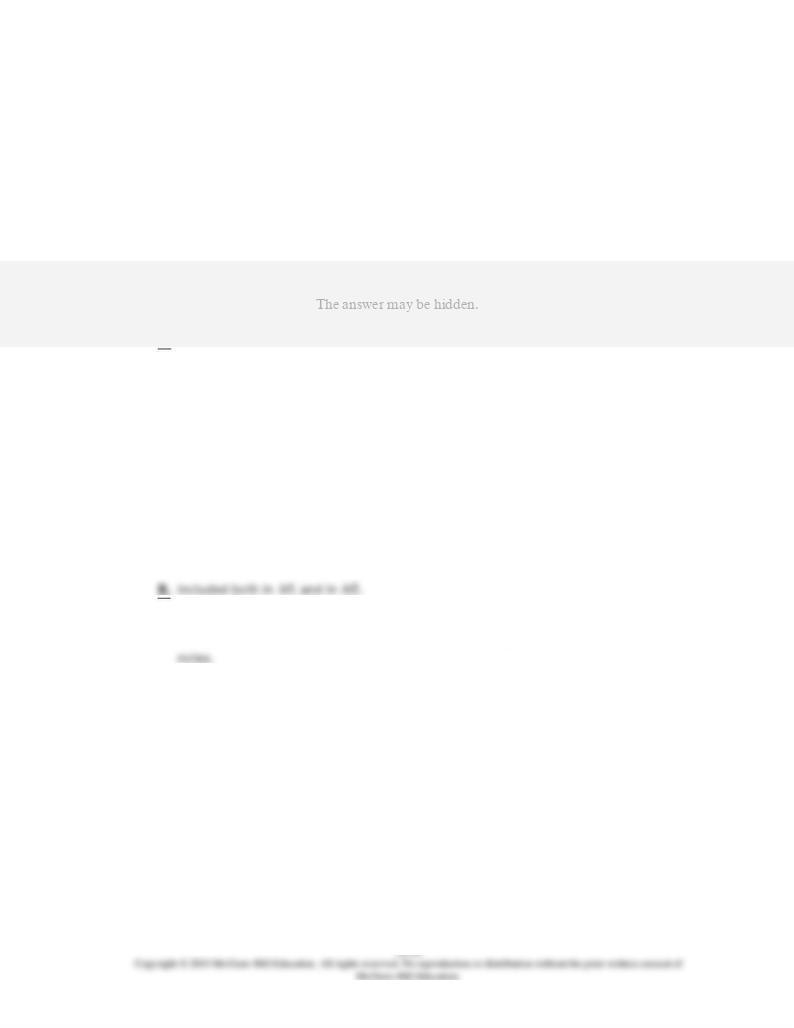
Accessibility: Keyboard Navigation
Blooms: Remember
Difficulty: 1 Easy
Learning Objective: 32-02 List and describe the components of the U.S. money supply.
Topic: Components of the money supply
29.
A $20 bill is a:
AACSB: Analytic
Accessibility: Keyboard Navigation
Blooms: Remember
Difficulty: 1 Easy
Learning Objective: 32-02 List and describe the components of the U.S. money supply.
Topic: Components of the money supply
30.
Coins in people's pockets and purses are:
A.
included in
M
1 but not in
M
2.
C.
included in
M
2 but not in
M
1.
D.
excluded from
M
1 and
M
2 because people can exchange them for Federal Reserve
AACSB: Analytic
Accessibility: Keyboard Navigation
Blooms: Remember
Difficulty: 1 Easy
Learning Objective: 32-02 List and describe the components of the U.S. money supply.
Topic: Components of the money supply
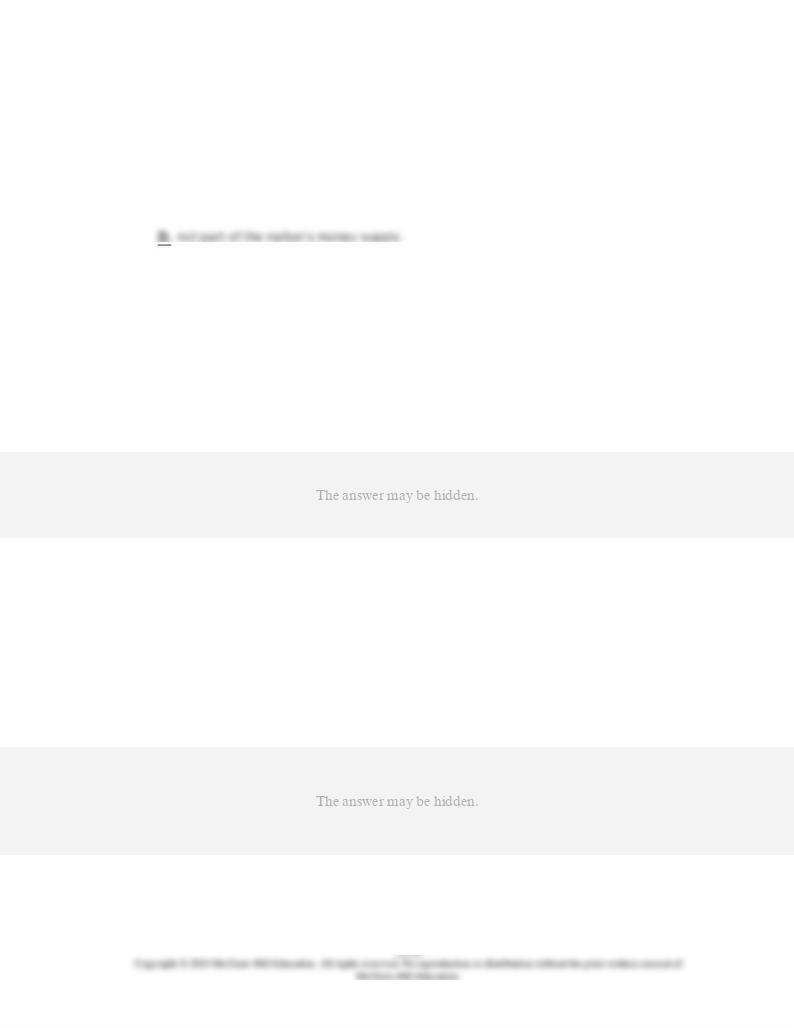
31.
Coins held in commercial banks are:
A.
included in
M
1 but not in
M
2.
B.
included both in
M
1 and in
M
2.
C.
included in
M
2 but not in
M
1.
AACSB: Analytic
Accessibility: Keyboard Navigation
Blooms: Remember
Difficulty: 1 Easy
Learning Objective: 32-02 List and describe the components of the U.S. money supply.
Topic: Components of the money supply
32.
Checkable deposits include:
AACSB: Analytic
Accessibility: Keyboard Navigation
Blooms: Remember
Difficulty: 1 Easy
Learning Objective: 32-02 List and describe the components of the U.S. money supply.
Topic: Components of the money supply
33.
The difference between
M
1 and
M
2 is that:
AACSB: Analytic
Accessibility: Keyboard Navigation
Blooms: Remember

Difficulty: 1 Easy
Learning Objective: 32-02 List and describe the components of the U.S. money supply.
Topic: Components of the money supply
34.
Assuming no other changes, if checkable deposits increase by $40 billion and currency in
circulation decreases by $40 billion, the:
AACSB: Analytic
Accessibility: Keyboard Navigation
Blooms: Apply
Difficulty: 2 Medium
Learning Objective: 32-02 List and describe the components of the U.S. money supply.
Topic: Components of the money supply
35.
Assuming no other changes, if checkable deposits decrease by $40 billion and balances in
money market mutual funds increase by $40 billion, the:
AACSB: Analytic
Accessibility: Keyboard Navigation
Blooms: Apply
Difficulty: 2 Medium
Learning Objective: 32-02 List and describe the components of the U.S. money supply.
Topic: Components of the money supply
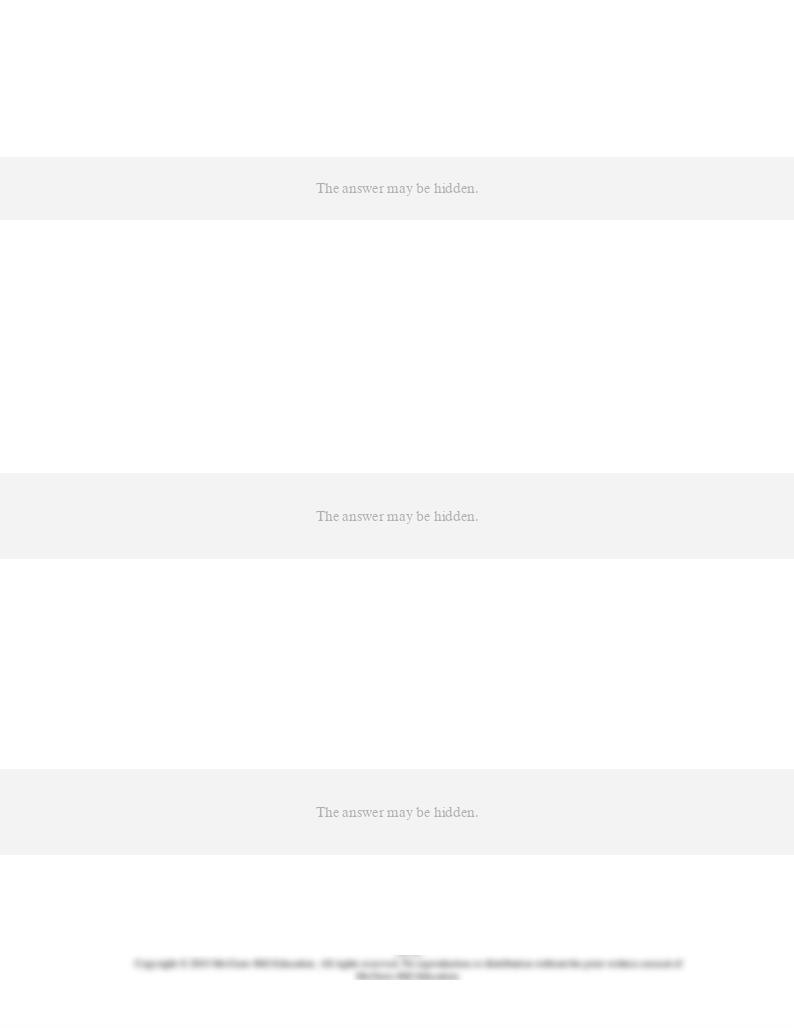
36.
"Near-monies" are included in:
D.
neither
M
1 nor
M
2.
AACSB: Analytic
Accessibility: Keyboard Navigation
Blooms: Remember
Difficulty: 1 Easy
Learning Objective: 32-02 List and describe the components of the U.S. money supply.
Topic: Components of the money supply
37.
Assuming no other changes, if balances in money market deposit accounts increase by
$50 billion and small-denominated time deposits decrease by $50 billion, the:
AACSB: Analytic
Accessibility: Keyboard Navigation
Blooms: Apply
Difficulty: 2 Medium
Learning Objective: 32-02 List and describe the components of the U.S. money supply.
Topic: Components of the money supply
38.
Small-denominated time deposits, by definition:
AACSB: Analytic
Accessibility: Keyboard Navigation
Blooms: Remember
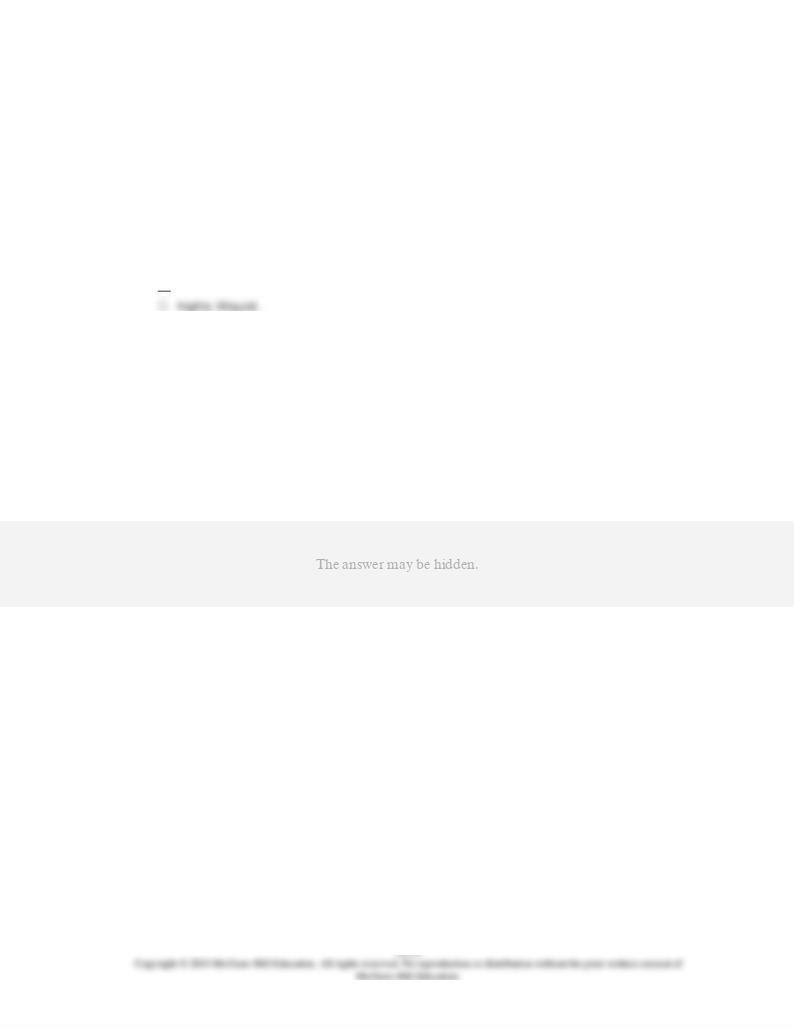
Difficulty: 1 Easy
Learning Objective: 32-02 List and describe the components of the U.S. money supply.
Topic: Components of the money supply
39.
The near-money components of
M
2 are:
A.
equally liquid as the
M
1 components of
M
2.
B.
more liquid than the
M
1 components of
M
2.
C.
less liquid than the
M
1 components of
M
2.
AACSB: Reflective Thinking
Accessibility: Keyboard Navigation
Blooms: Remember
Difficulty: 1 Easy
Learning Objective: 32-02 List and describe the components of the U.S. money supply.
Topic: Components of the money supply
40.
The
M
2 money supply is about ________ times larger than the
M
1 money supply.
AACSB: Analytic
Accessibility: Keyboard Navigation
Blooms: Remember
Difficulty: 1 Easy
Learning Objective: 32-02 List and describe the components of the U.S. money supply.
Topic: Components of the money supply
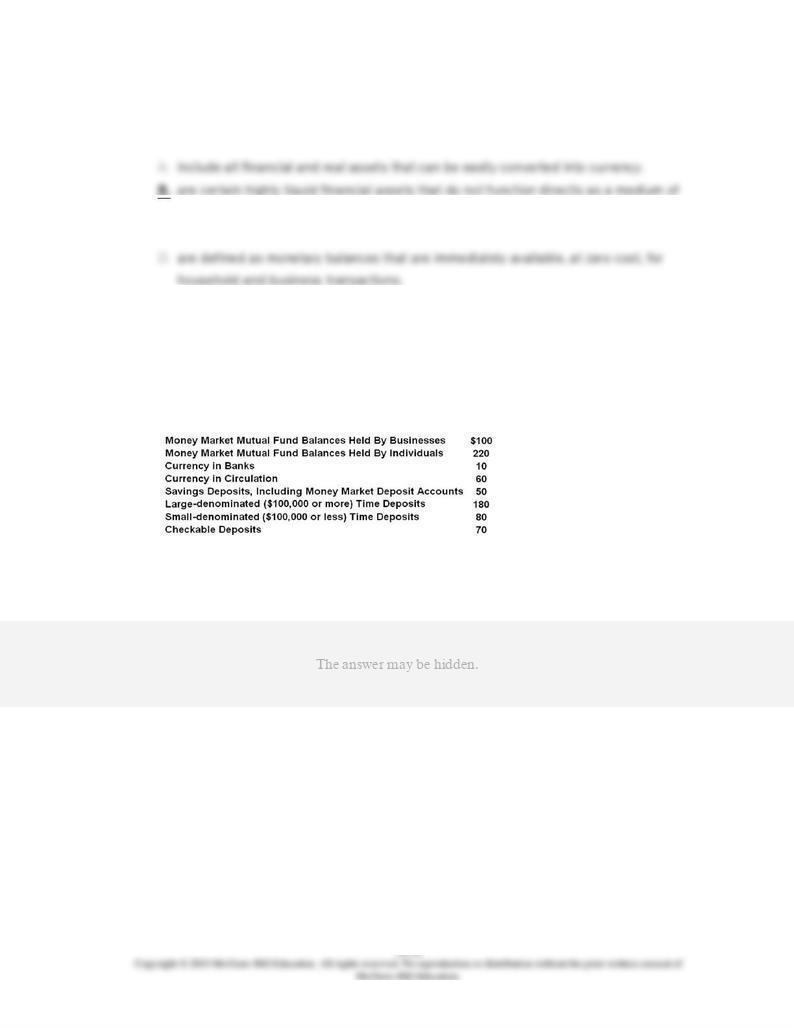
41.
Near-monies:
exchange but can be readily converted into
M
1.
C.
are excluded from
M
2 because they are highly liquid.
AACSB: Analytic
Accessibility: Keyboard Navigation
Blooms: Remember
Difficulty: 1 Easy
Learning Objective: 32-02 List and describe the components of the U.S. money supply.
Topic: Components of the money supply
42.
Refer to the information. Money supply
M
1 for this economy is:
AACSB: Analytic
Blooms: Apply
Difficulty: 2 Medium
Learning Objective: 32-02 List and describe the components of the U.S. money supply.
Topic: Components of the money supply
Type: Table
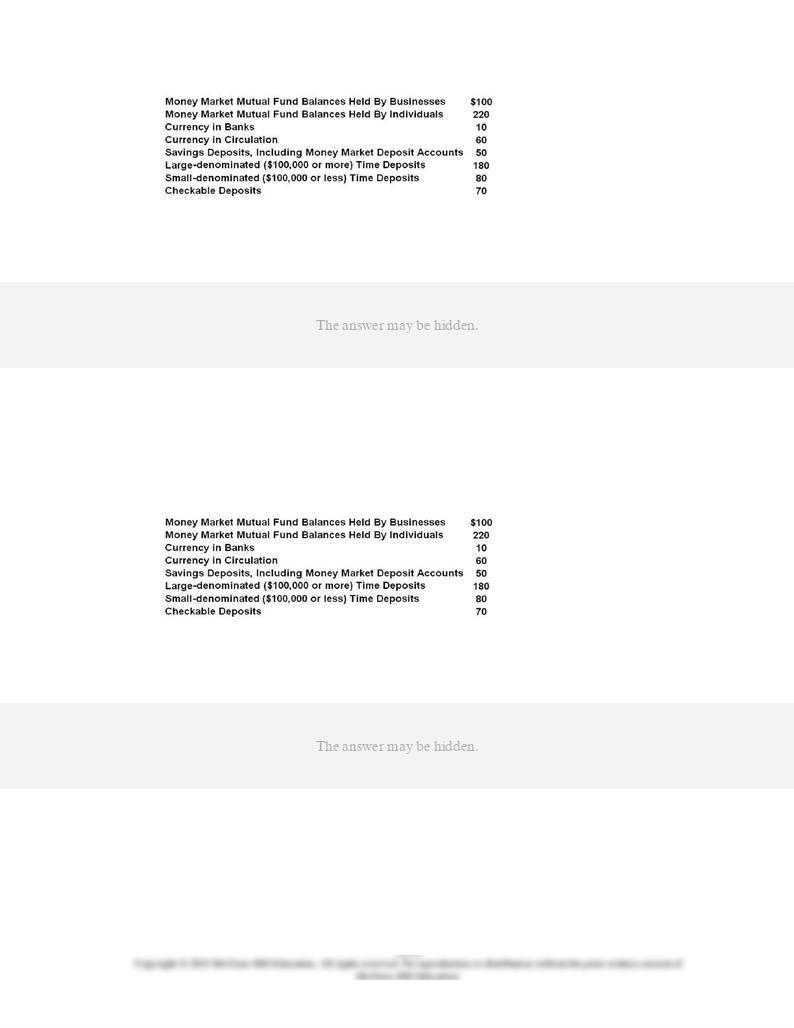
43.
Refer to the information. Money supply
M
2 for this economy is:
AACSB: Analytic
Blooms: Apply
Difficulty: 2 Medium
Learning Objective: 32-02 List and describe the components of the U.S. money supply.
Topic: Components of the money supply
Type: Table
44.
Refer to the information. The value of the "near-monies" that are part of
M
2 is:
AACSB: Analytic
Blooms: Apply
Difficulty: 2 Medium
Learning Objective: 32-02 List and describe the components of the U.S. money supply.
Topic: Components of the money supply
Type: Table
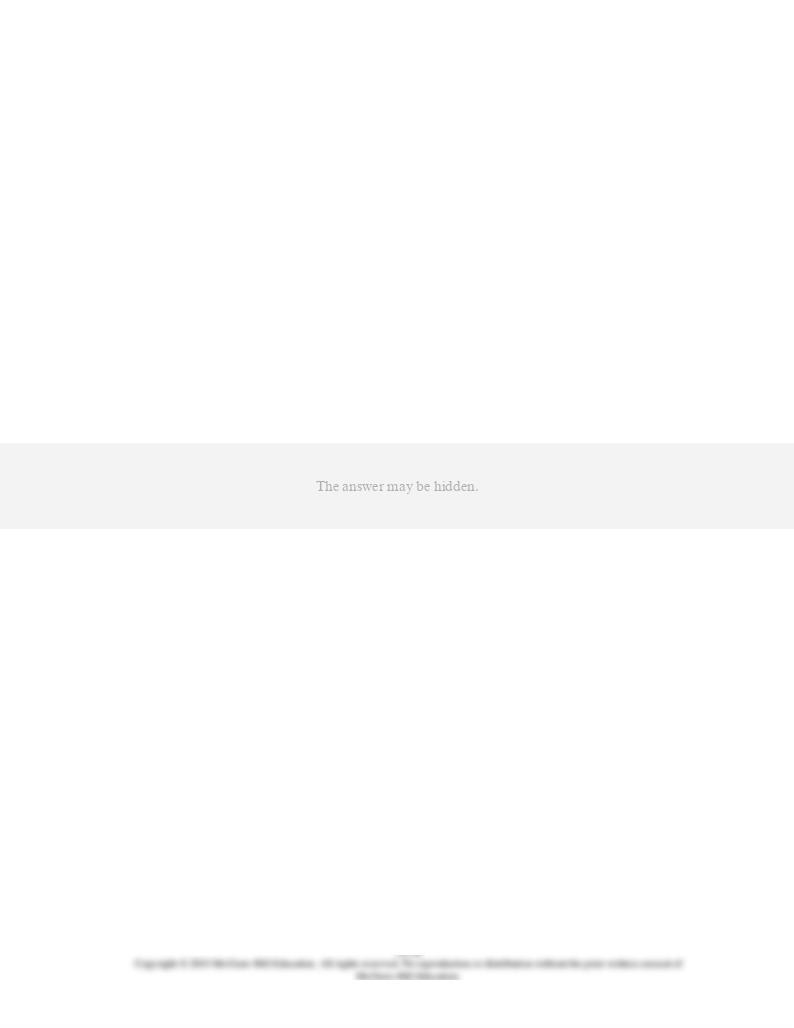
45.
Answer the question on the basis of the following list of assets:
1. Large-denominated ($100,000 and over) time deposits
2. Noncheckable savings deposits
3. Currency (coins and paper money) in circulation
4. Small-denominated (under $100,000) time deposits
5. Stock certificates
6. Checkable deposits
7. Money market deposit accounts
8. Money market mutual fund balances held by individuals
9. Money market mutual fund balances held by businesses
10. Currency held in bank vaults
Refer to the given list. The
M
1 definition of money comprises item(s):
AACSB: Analytic
Accessibility: Keyboard Navigation
Blooms: Remember
Difficulty: 1 Easy
Learning Objective: 32-02 List and describe the components of the U.S. money supply.
Topic: Components of the money supply

46.
Answer the question on the basis of the following list of assets:
1. Large-denominated ($100,000 and over) time deposits
2. Noncheckable savings deposits
3. Currency (coins and paper money) in circulation
4. Small-denominated (under $100,000) time deposits
5. Stock certificates
6. Checkable deposits
7. Money market deposit accounts
8. Money market mutual fund balances held by individuals
9. Money market mutual fund balances held by businesses
10. Currency held in bank vaults
Refer to the given list. The
M
2 definition of money comprises:
AACSB: Analytic
Accessibility: Keyboard Navigation
Blooms: Remember
Difficulty: 1 Easy
Learning Objective: 32-02 List and describe the components of the U.S. money supply.
Topic: Components of the money supply
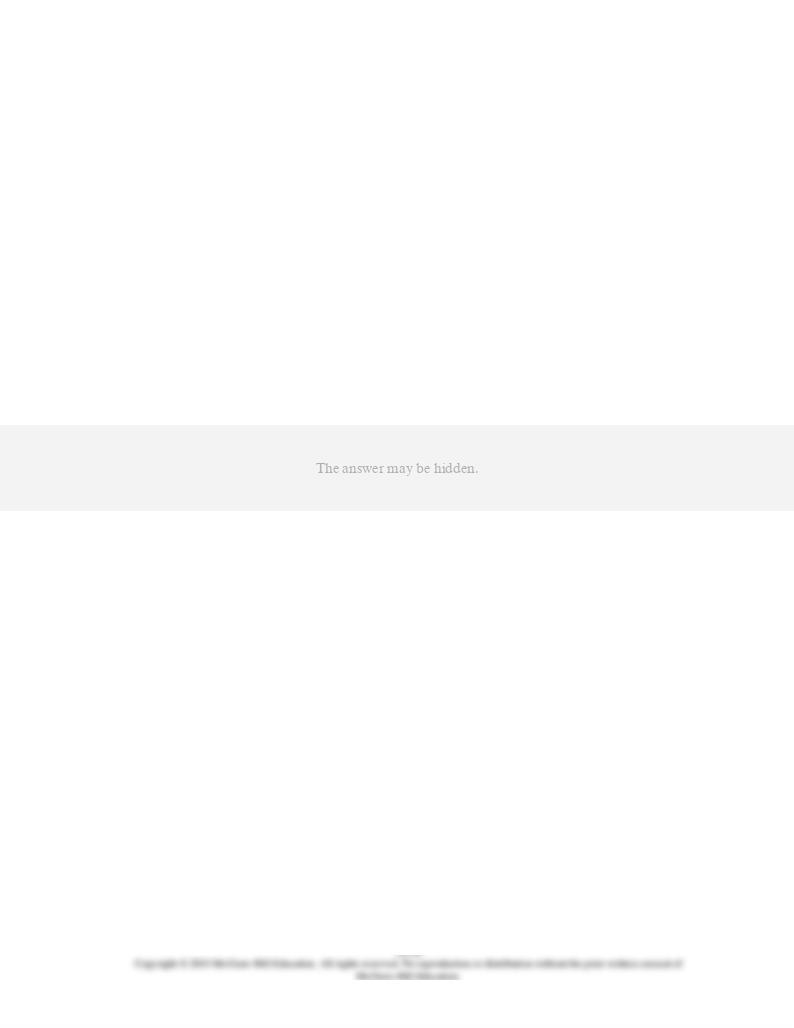
47.
Answer the question on the basis of the following list of assets:
1. Large-denominated ($100,000 and over) time deposits
2. Noncheckable savings deposits
3. Currency (coins and paper money) in circulation
4. Small-denominated (under $100,000) time deposits
5. Stock certificates
6. Checkable deposits
7. Money market deposit accounts
8. Money market mutual fund balances held by individuals
9. Money market mutual fund balances held by businesses
10. Currency held in bank vaults
Refer to the given list. The assets that are
not
included in either
M
1 or
M
2 are:
AACSB: Analytic
Accessibility: Keyboard Navigation
Blooms: Remember
Difficulty: 1 Easy
Learning Objective: 32-02 List and describe the components of the U.S. money supply.
Topic: Components of the money supply
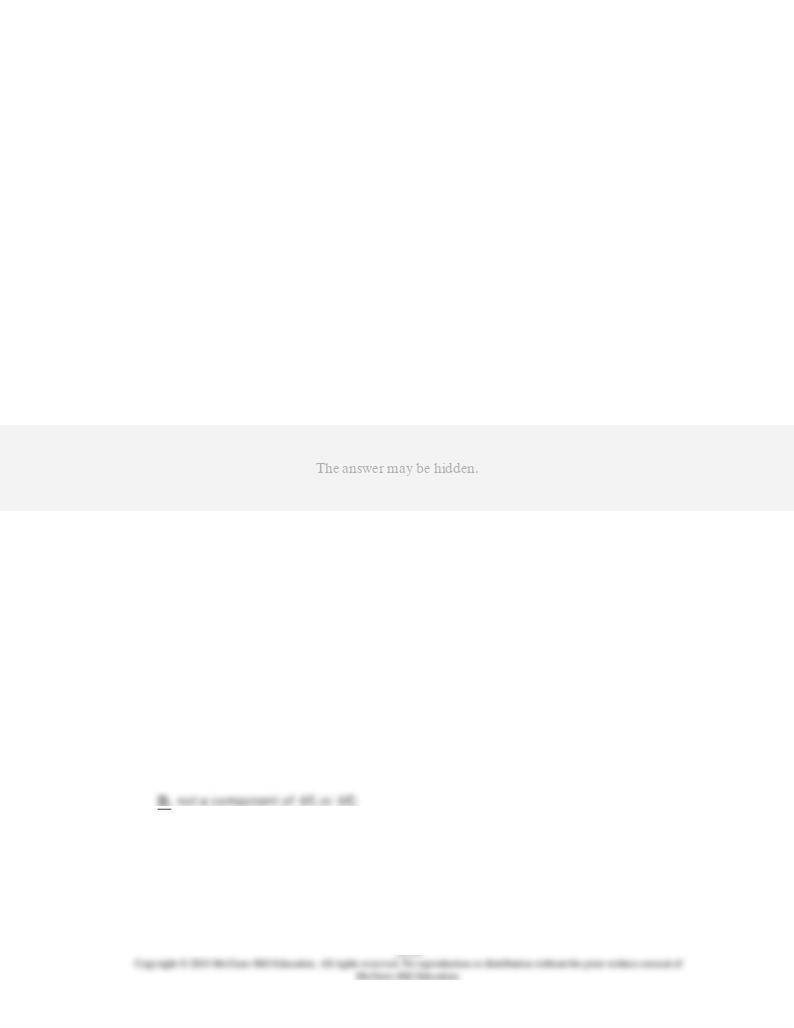
48.
Answer the question on the basis of the following list of assets:
1. Large-denominated ($100,000 and over) time deposits
2. Noncheckable savings deposits
3. Currency (coins and paper money) in circulation
4. Small-denominated (under $100,000) time deposits
5. Stock certificates
6. Checkable deposits
7. Money market deposit accounts
8. Money market mutual fund balances held by individuals
9. Money market mutual fund balances held by businesses
10. Currency held in bank vaults
Refer to the given list. Which of the following are considered to be "near-monies?"
AACSB: Analytic
Accessibility: Keyboard Navigation
Blooms: Remember
Difficulty: 1 Easy
Learning Objective: 32-02 List and describe the components of the U.S. money supply.
Topic: Components of the money supply
49.
Time deposits of $100,000 or more are:
A.
a component of
M
1.
B.
a component of
M
2 but not of
M
1.
C.
a component of
M
1 but not of
M
2.
AACSB: Analytic
Accessibility: Keyboard Navigation
Blooms: Remember
Difficulty: 1 Easy
Learning Objective: 32-02 List and describe the components of the U.S. money supply.

Topic: Components of the money supply
50.
Currency held within banks is part of:
AACSB: Analytic
Accessibility: Keyboard Navigation
Blooms: Remember
Difficulty: 1 Easy
Learning Objective: 32-02 List and describe the components of the U.S. money supply.
Topic: Components of the money supply
51.
The money supply is backed:
AACSB: Reflective Thinking
Accessibility: Keyboard Navigation
Blooms: Understand
Difficulty: 2 Medium
Learning Objective: 32-03 Describe what "backs" the money supply; making us willing to accept it as payment.
Topic: What "backs" the money supply?

52.
Which of the following does
not
explain what backs the money supply in the United
States?
AACSB: Analytic
Accessibility: Keyboard Navigation
Blooms: Remember
Difficulty: 1 Easy
Learning Objective: 32-03 Describe what "backs" the money supply; making us willing to accept it as payment.
Topic: What "backs" the money supply?
53.
Suppose that the federal government suddenly declared that wheat was to be used as
money. What is a possible outcome of that decision?
AACSB: Reflective Thinking
Accessibility: Keyboard Navigation
Blooms: Apply
Difficulty: 2 Medium
Learning Objective: 32-03 Describe what "backs" the money supply; making us willing to accept it as payment.
Topic: What "backs" the money supply?

54.
The purchasing power of money and the price level vary:
AACSB: Reflective Thinking
Accessibility: Keyboard Navigation
Blooms: Remember
Difficulty: 1 Easy
Learning Objective: 32-03 Describe what "backs" the money supply; making us willing to accept it as payment.
Topic: What "backs" the money supply?
55.
The value of money varies:
AACSB: Reflective Thinking
Accessibility: Keyboard Navigation
Blooms: Remember
Difficulty: 1 Easy
Learning Objective: 32-03 Describe what "backs" the money supply; making us willing to accept it as payment.
Topic: What "backs" the money supply?
56.
If the price index rises from 100 to 120, the purchasing power value of the dollar:
AACSB: Analytic
Accessibility: Keyboard Navigation
Blooms: Apply
Difficulty: 2 Medium
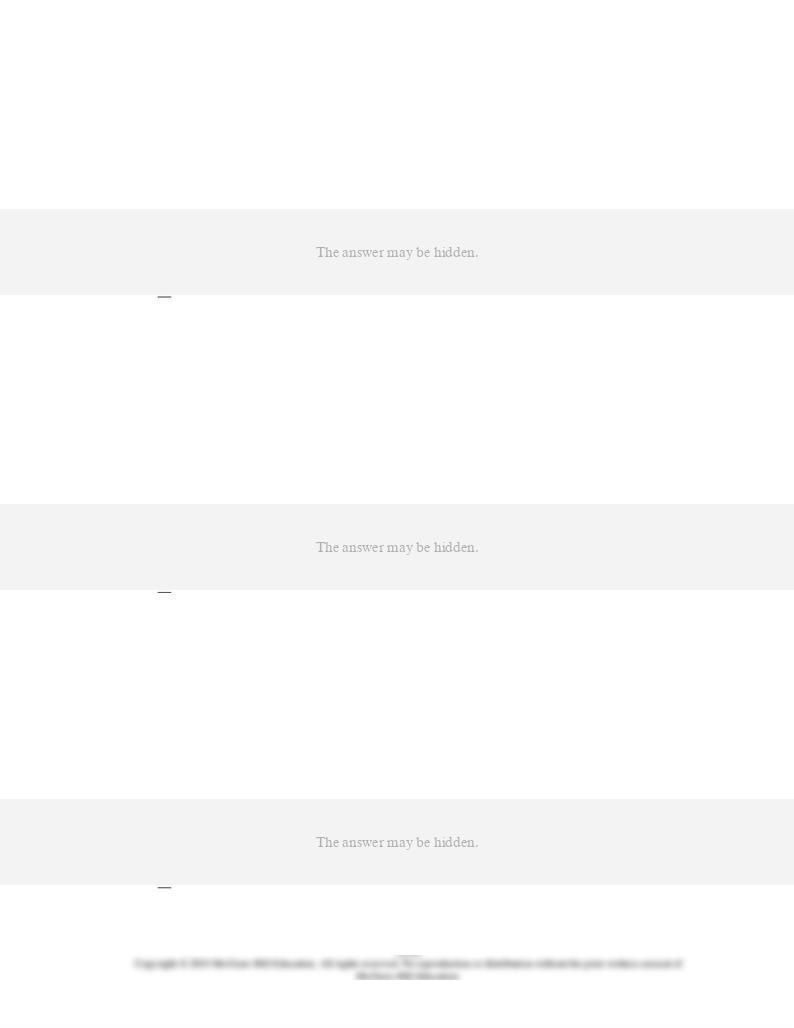
Learning Objective: 32-03 Describe what "backs" the money supply; making us willing to accept it as payment.
Topic: What "backs" the money supply?
57.
If the price index rises from 200 to 250, the purchasing power value of the dollar:
AACSB: Analytic
Accessibility: Keyboard Navigation
Blooms: Apply
Difficulty: 2 Medium
Learning Objective: 32-03 Describe what "backs" the money supply; making us willing to accept it as payment.
Topic: What "backs" the money supply?
58.
The purchasing power of the dollar:
AACSB: Analytic
Accessibility: Keyboard Navigation
Blooms: Remember
Difficulty: 1 Easy
Learning Objective: 32-03 Describe what "backs" the money supply; making us willing to accept it as payment.
Topic: What "backs" the money supply?
59.
During periods of rapid inflation, money may cease to work as a medium of exchange:
AACSB: Reflective Thinking

Accessibility: Keyboard Navigation
Blooms: Understand
Difficulty: 2 Medium
Learning Objective: 32-03 Describe what "backs" the money supply; making us willing to accept it as payment.
Topic: What "backs" the money supply?
60.
Stabilizing a nation's price level and the purchasing power of its money can be achieved:
AACSB: Reflective Thinking
Accessibility: Keyboard Navigation
Blooms: Understand
Difficulty: 2 Medium
Learning Objective: 32-03 Describe what "backs" the money supply; making us willing to accept it as payment.
Topic: What "backs" the money supply?
61.
Other things equal, an excessive increase in the money supply will:
AACSB: Reflective Thinking
Accessibility: Keyboard Navigation
Blooms: Understand
Difficulty: 2 Medium
Learning Objective: 32-03 Describe what "backs" the money supply; making us willing to accept it as payment.
Topic: What "backs" the money supply?

62.
If
P
equals the price level expressed as an index number and
$V
equals the value of the
D.
$V
=
P
- 1.
AACSB: Analytic
Accessibility: Keyboard Navigation
Blooms: Remember
Difficulty: 1 Easy
Learning Objective: 32-03 Describe what "backs" the money supply; making us willing to accept it as payment.
Topic: What "backs" the money supply?
63.
Answer the question on the basis of the following table:
Refer to the table. The value of the dollar in year 2 is:
AACSB: Analytic
Blooms: Apply
Difficulty: 2 Medium
Learning Objective: 32-03 Describe what "backs" the money supply; making us willing to accept it as payment.
Topic: What "backs" the money supply?
Type: Table
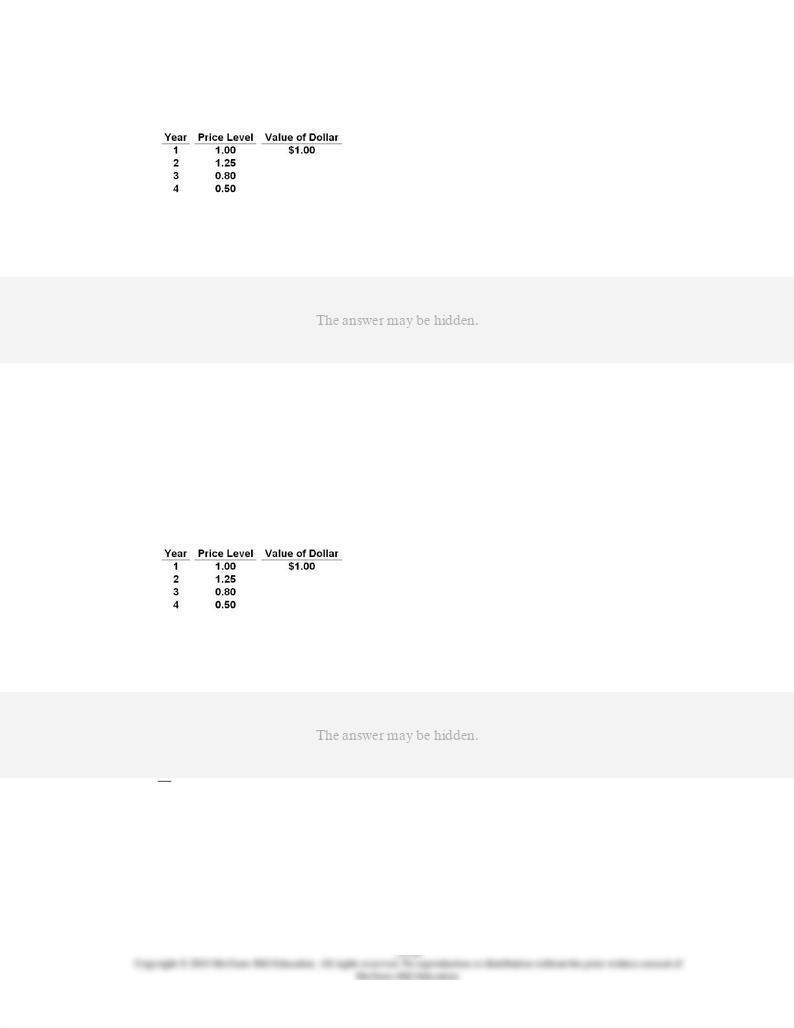
64.
Answer the question on the basis of the following table:
Refer to the table. The value of the dollar in year 3 is:
AACSB: Analytic
Blooms: Apply
Difficulty: 2 Medium
Learning Objective: 32-03 Describe what "backs" the money supply; making us willing to accept it as payment.
Topic: What "backs" the money supply?
Type: Table
65.
Answer the question on the basis of the following table:
Refer to the table. The value of the dollar in year 4 is:
AACSB: Analytic
Blooms: Apply
Difficulty: 2 Medium
Learning Objective: 32-03 Describe what "backs" the money supply; making us willing to accept it as payment.
Topic: What "backs" the money supply?
Type: Table
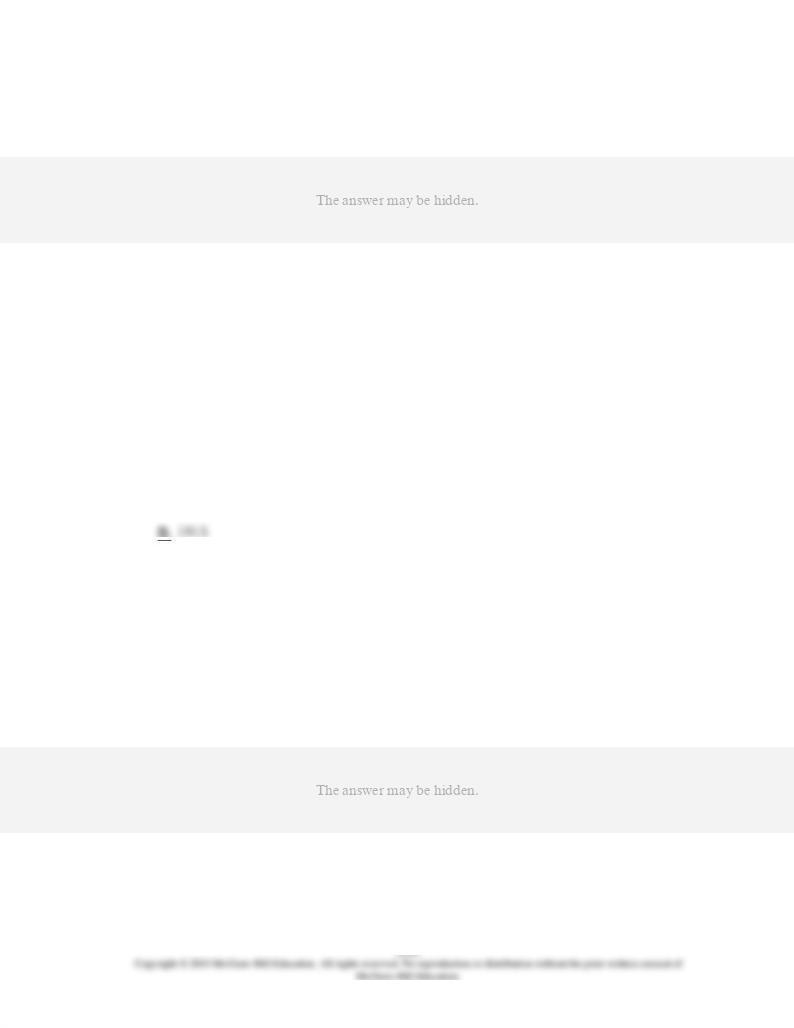
66.
The central authority of the U.S. banking system is the:
AACSB: Analytic
Accessibility: Keyboard Navigation
Blooms: Remember
Difficulty: 1 Easy
Learning Objective: 32-04 Discuss the makeup of the Federal Reserve and its relationship to banks and thrifts.
Topic: Federal Reserve and the banking system
67.
The Federal Reserve System was created in:
A.
1926.
B.
1946.
C.
1895.
AACSB: Reflective Thinking
Accessibility: Keyboard Navigation
Blooms: Remember
Difficulty: 1 Easy
Learning Objective: 32-04 Discuss the makeup of the Federal Reserve and its relationship to banks and thrifts.
Topic: Federal Reserve and the banking system
68.
In the U.S. economy, the money supply is controlled by the:
AACSB: Reflective Thinking
Accessibility: Keyboard Navigation
Blooms: Remember
Difficulty: 1 Easy
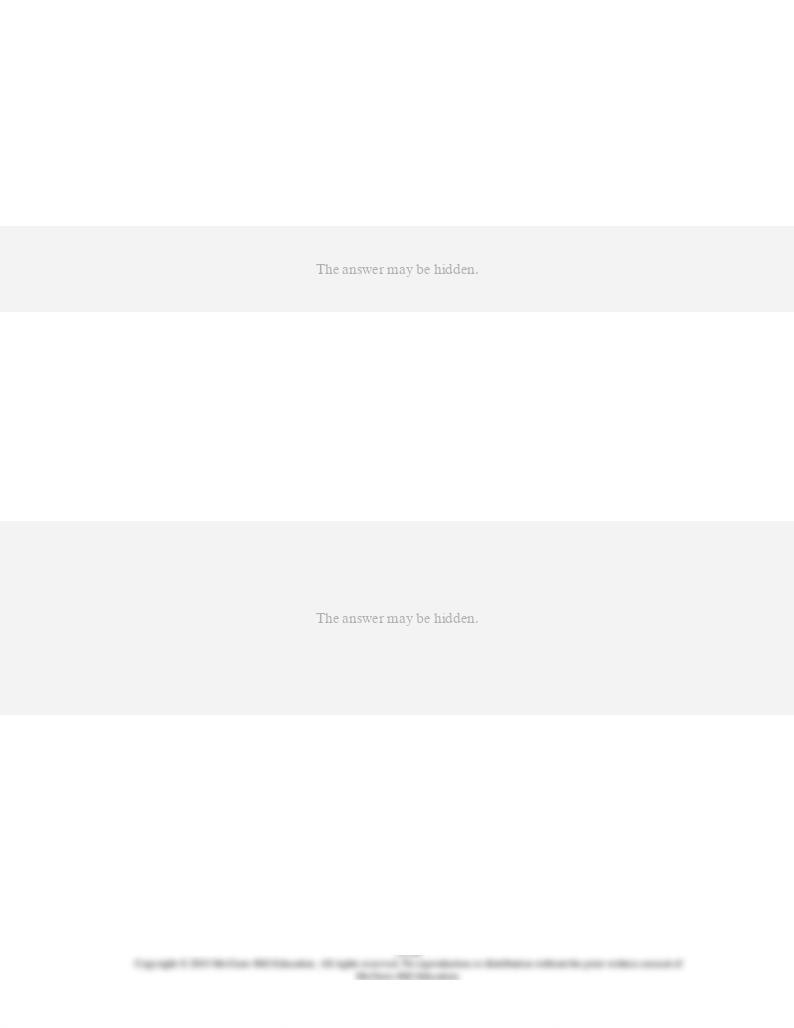
Learning Objective: 32-05 Identify the functions and responsibilities of the Federal Reserve and explain why Fed
independence is important.
Topic: Fed functions, responsibilities, and independence
69.
As it relates to Federal Reserve activities, the acronym FOMC describes the:
AACSB: Analytic
Accessibility: Keyboard Navigation
Blooms: Remember
Difficulty: 1 Easy
Learning Objective: 32-04 Discuss the makeup of the Federal Reserve and its relationship to banks and thrifts.
Topic: Federal Reserve and the banking system
70.
The Federal Open Market Committee (FOMC) is made up of:
AACSB: Analytic
Accessibility: Keyboard Navigation
Blooms: Remember
Difficulty: 1 Easy
Learning Objective: 32-04 Discuss the makeup of the Federal Reserve and its relationship to banks and thrifts.
Topic: Federal Reserve and the banking system
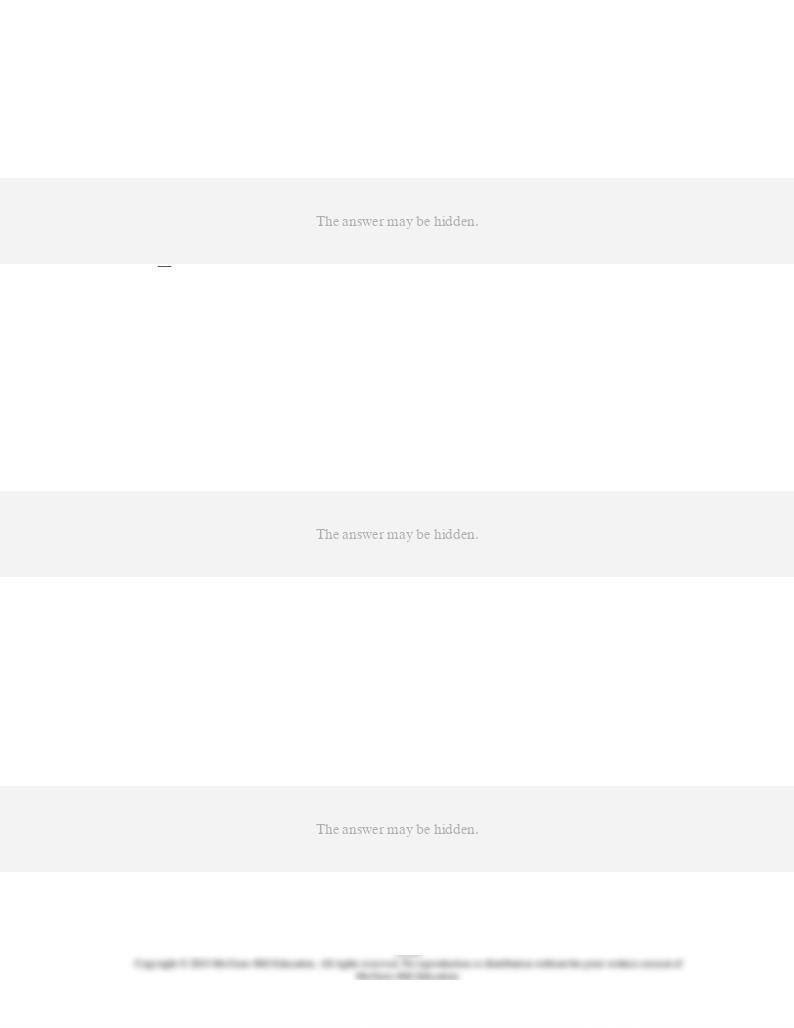
71.
The group that sets the Federal Reserve System's policy on buying and selling government
securities (bills, notes, and bonds) is the:
AACSB: Analytic
Accessibility: Keyboard Navigation
Blooms: Remember
Difficulty: 1 Easy
Learning Objective: 32-05 Identify the functions and responsibilities of the Federal Reserve and explain why Fed
independence is important.
Topic: Fed functions, responsibilities, and independence
72.
Approximately how many commercial banks are now operating in the United States?
AACSB: Analytic
Accessibility: Keyboard Navigation
Blooms: Remember
Difficulty: 1 Easy
Learning Objective: 32-04 Discuss the makeup of the Federal Reserve and its relationship to banks and thrifts.
Topic: Federal Reserve and the banking system
73.
Which one of the following is true about the U.S. Federal Reserve System?
AACSB: Reflective Thinking
Accessibility: Keyboard Navigation
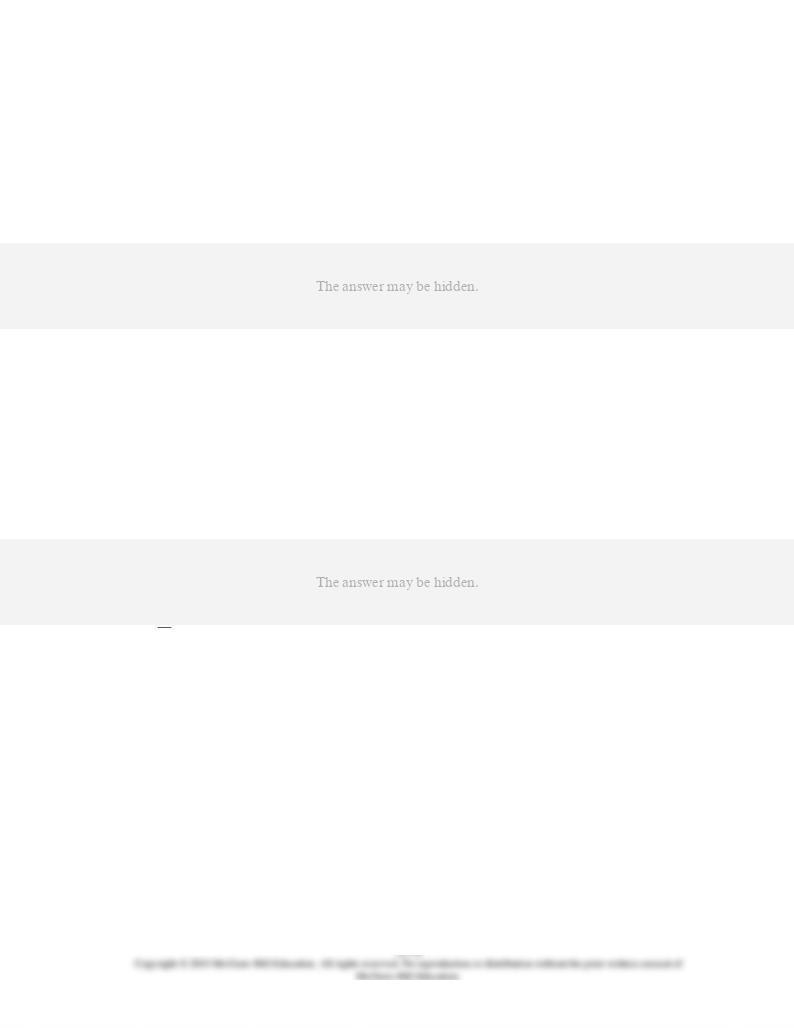
Blooms: Remember
Difficulty: 1 Easy
Learning Objective: 32-04 Discuss the makeup of the Federal Reserve and its relationship to banks and thrifts.
Topic: Federal Reserve and the banking system
74.
The Board of Governors of the Federal Reserve has ____ members.
AACSB: Analytic
Accessibility: Keyboard Navigation
Blooms: Remember
Difficulty: 1 Easy
Learning Objective: 32-04 Discuss the makeup of the Federal Reserve and its relationship to banks and thrifts.
Topic: Federal Reserve and the banking system
75.
The members of the Federal Reserve Board:
AACSB: Analytic
Accessibility: Keyboard Navigation
Blooms: Remember
Difficulty: 1 Easy
Learning Objective: 32-04 Discuss the makeup of the Federal Reserve and its relationship to banks and thrifts.
Topic: Federal Reserve and the banking system
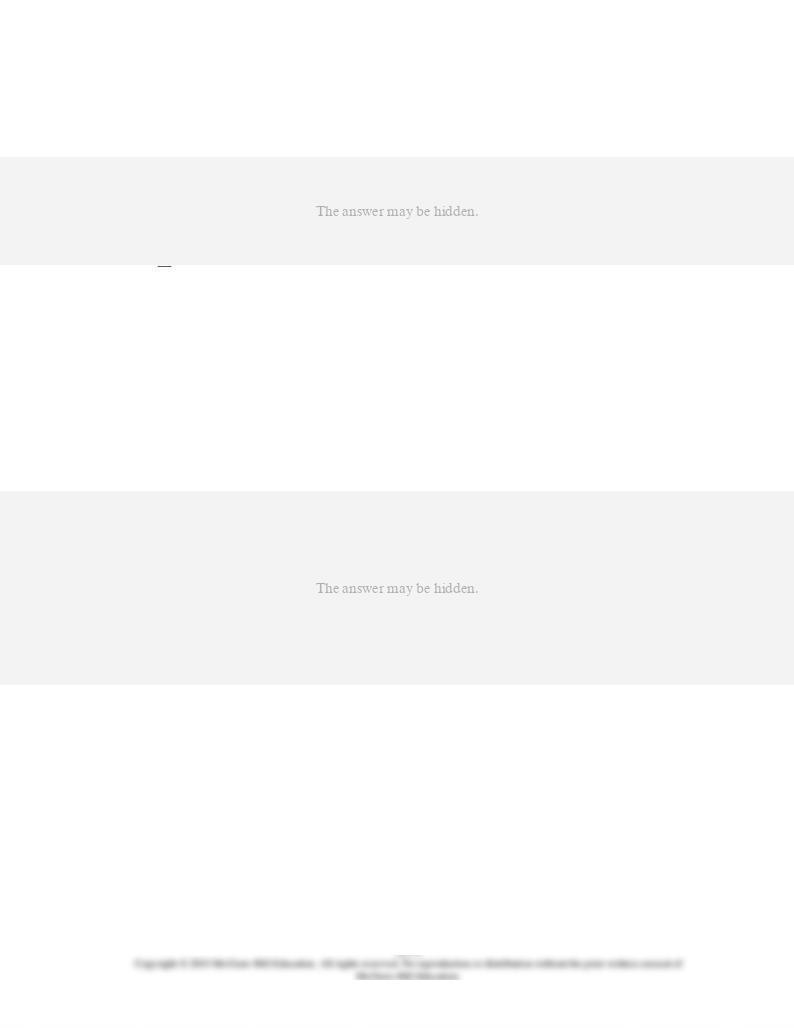
76.
An important routine function of the Federal Reserve Bank is to:
AACSB: Analytic
Accessibility: Keyboard Navigation
Blooms: Remember
Difficulty: 1 Easy
Learning Objective: 32-05 Identify the functions and responsibilities of the Federal Reserve and explain why Fed
independence is important.
Topic: Fed functions, responsibilities, and independence
77.
Which of the following statements best describes the 12 Federal Reserve Banks?
AACSB: Analytic
Accessibility: Keyboard Navigation
Blooms: Understand
Difficulty: 2 Medium
Learning Objective: 32-05 Identify the functions and responsibilities of the Federal Reserve and explain why Fed
independence is important.
Topic: Fed functions, responsibilities, and independence

78.
The seven members of the Board of Governors of the Federal Reserve System are:
AACSB: Reflective Thinking
Accessibility: Keyboard Navigation
Blooms: Remember
Difficulty: 1 Easy
Learning Objective: 32-04 Discuss the makeup of the Federal Reserve and its relationship to banks and thrifts.
Topic: Federal Reserve and the banking system
79.
To say that the Federal Reserve Banks are quasi-public banks means that:
AACSB: Analytic
Accessibility: Keyboard Navigation
Blooms: Understand
Difficulty: 2 Medium
Learning Objective: 32-04 Discuss the makeup of the Federal Reserve and its relationship to banks and thrifts.
Topic: Federal Reserve and the banking system
80.
Which of the following is the basic economic policy function of the Federal Reserve
Banks?
AACSB: Analytic
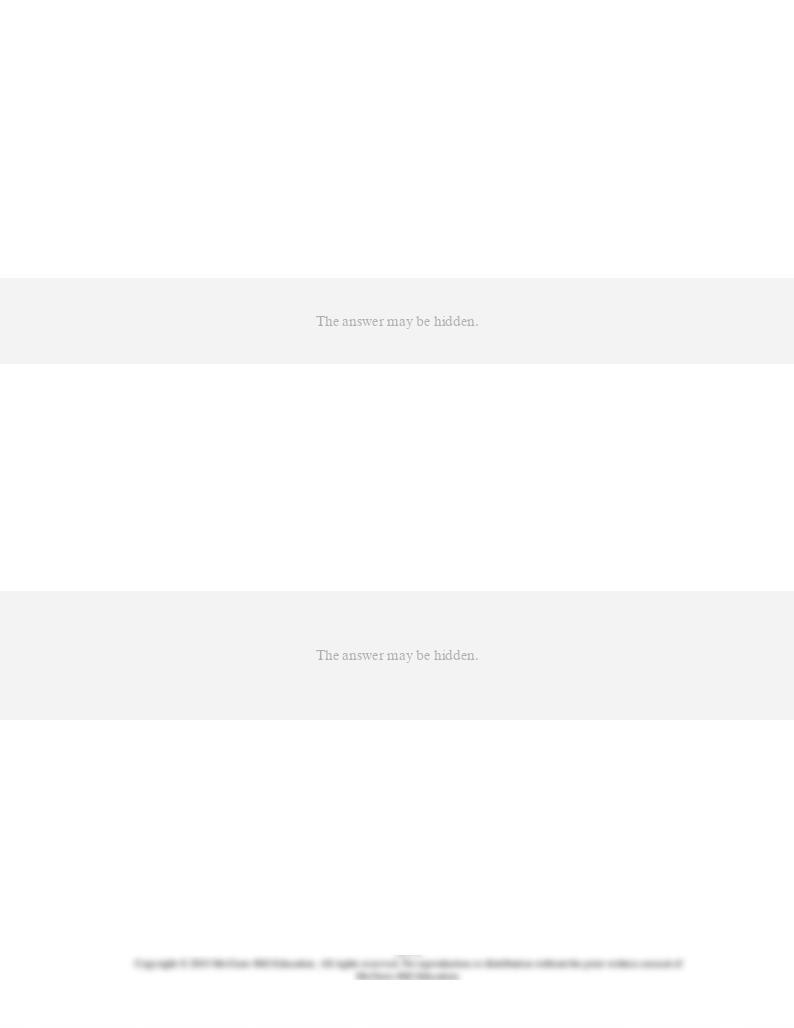
Accessibility: Keyboard Navigation
Blooms: Remember
Difficulty: 3 Hard
Learning Objective: 32-05 Identify the functions and responsibilities of the Federal Reserve and explain why Fed
independence is important.
Topic: Fed functions, responsibilities, and independence
81.
The Federal Reserve System:
AACSB: Reflective Thinking
Accessibility: Keyboard Navigation
Blooms: Understand
Difficulty: 2 Medium
Learning Objective: 32-05 Identify the functions and responsibilities of the Federal Reserve and explain why Fed
independence is important.
Topic: Fed functions, responsibilities, and independence
82.
Research for industrially advanced countries indicates that:
AACSB: Reflective Thinking
Accessibility: Keyboard Navigation
Blooms: Remember
Difficulty: 1 Easy
Learning Objective: 32-05 Identify the functions and responsibilities of the Federal Reserve and explain why Fed
independence is important.
Topic: Fed functions, responsibilities, and independence
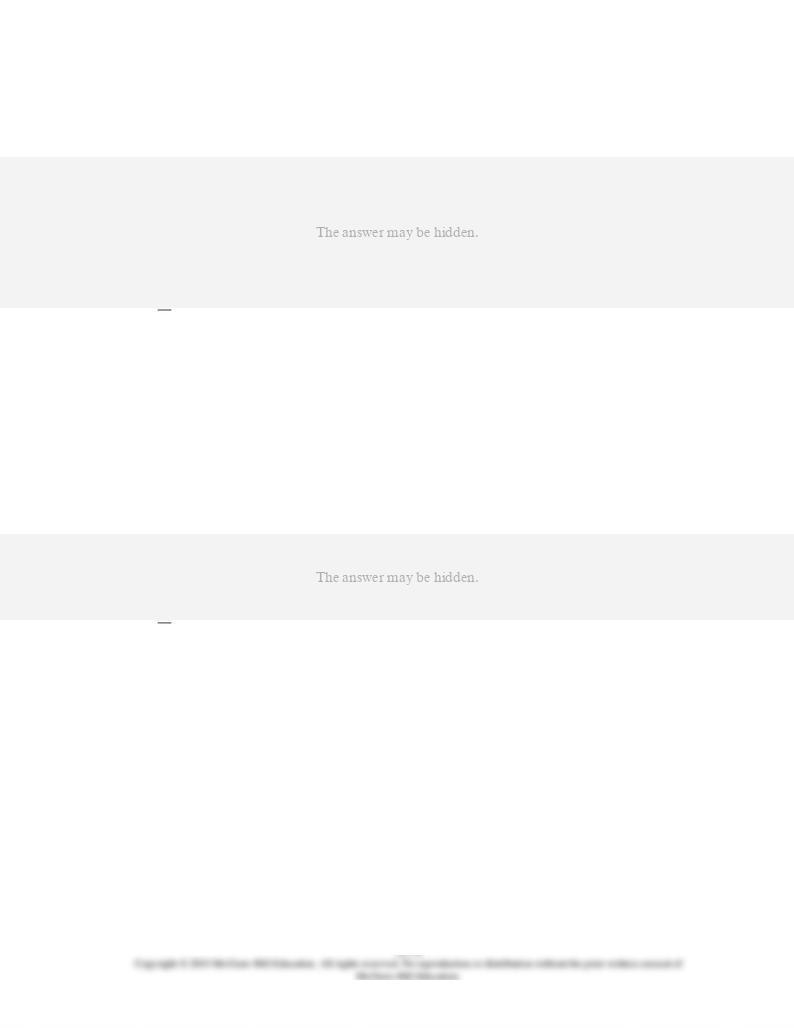
83.
Research involving industrially advanced countries suggests that:
AACSB: Reflective Thinking
Accessibility: Keyboard Navigation
Blooms: Remember
Difficulty: 1 Easy
Learning Objective: 32-05 Identify the functions and responsibilities of the Federal Reserve and explain why Fed
independence is important.
Topic: Fed functions, responsibilities, and independence
84.
Commercial banks and thrift institutions:
AACSB: Reflective Thinking
Accessibility: Keyboard Navigation
Blooms: Understand
Difficulty: 2 Medium
Learning Objective: 32-04 Discuss the makeup of the Federal Reserve and its relationship to banks and thrifts.
Topic: Federal Reserve and the banking system
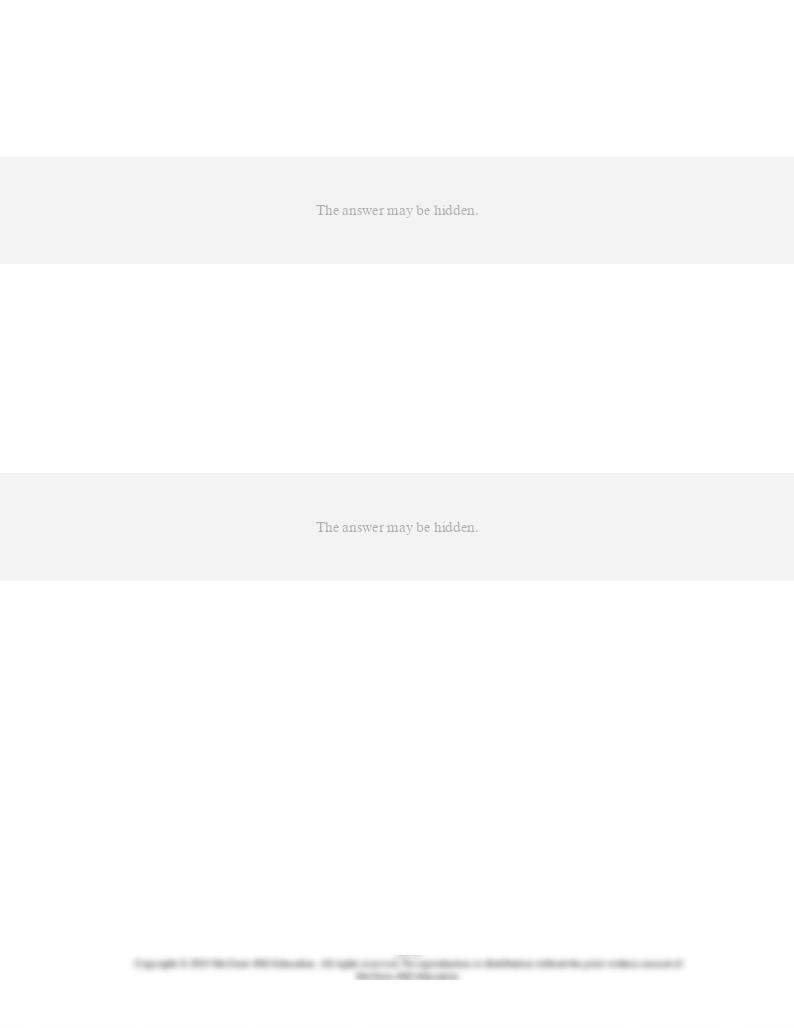
85.
"Subprime mortgage loans" refer to:
AACSB: Analytic
Accessibility: Keyboard Navigation
Blooms: Remember
Difficulty: 1 Easy
Learning Objective: 32-06 Identify and explain the main factors that contributed to the financial crisis of 2007-2008.
Topic: Financial crisis of 2007 and 2008
86.
What are "mortgage-backed securities"?
AACSB: Analytic
Accessibility: Keyboard Navigation
Blooms: Remember
Difficulty: 1 Easy
Learning Objective: 32-06 Identify and explain the main factors that contributed to the financial crisis of 2007-2008.
Topic: Financial crisis of 2007 and 2008
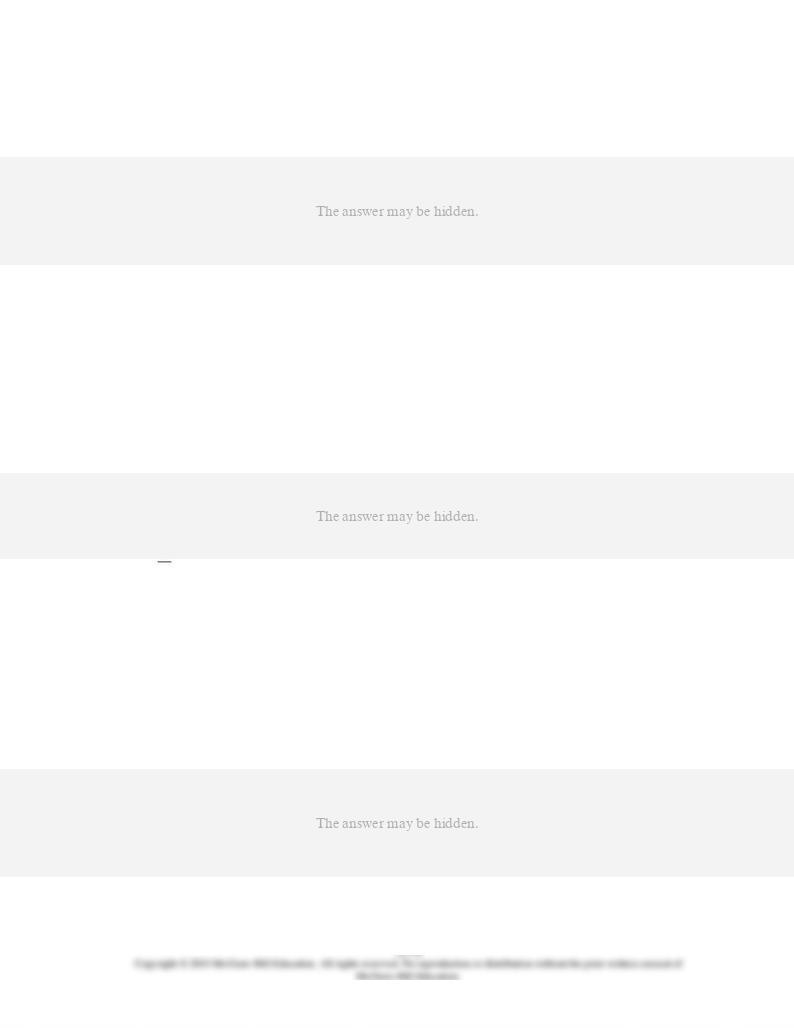
87.
When banks bundled mortgage loans and sold the resulting mortgage-backed securities:
AACSB: Reflective Thinking
Accessibility: Keyboard Navigation
Blooms: Understand
Difficulty: 2 Medium
Learning Objective: 32-06 Identify and explain the main factors that contributed to the financial crisis of 2007-2008.
Topic: Financial crisis of 2007 and 2008
88.
Banks lost money during the mortgage default crisis because:
AACSB: Reflective Thinking
Accessibility: Keyboard Navigation
Blooms: Remember
Difficulty: 1 Easy
Learning Objective: 32-06 Identify and explain the main factors that contributed to the financial crisis of 2007-2008.
Topic: Financial crisis of 2007 and 2008
89.
In the financial industry, "securitization" refers to:
AACSB: Analytic
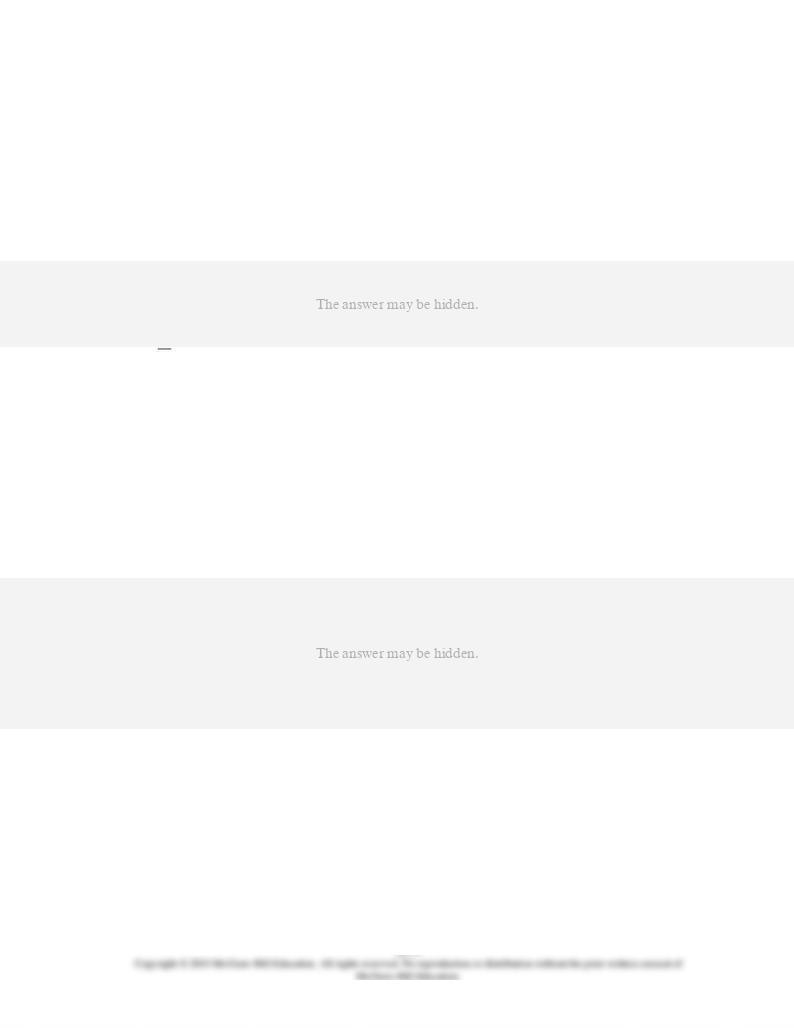
Accessibility: Keyboard Navigation
Blooms: Remember
Difficulty: 1 Easy
Learning Objective: 32-06 Identify and explain the main factors that contributed to the financial crisis of 2007-2008.
Topic: Financial crisis of 2007 and 2008
90.
Collateralized default swaps:
AACSB: Reflective Thinking
Accessibility: Keyboard Navigation
Blooms: Understand
Difficulty: 2 Medium
Learning Objective: 32-06 Identify and explain the main factors that contributed to the financial crisis of 2007-2008.
Topic: Financial crisis of 2007 and 2008
91.
What does it mean when economists say that home buyers are "underwater" on their
mortgages?
AACSB: Reflective Thinking
Accessibility: Keyboard Navigation
Blooms: Understand
Difficulty: 2 Medium
Learning Objective: 32-06 Identify and explain the main factors that contributed to the financial crisis of 2007-2008.
Topic: Financial crisis of 2007 and 2008
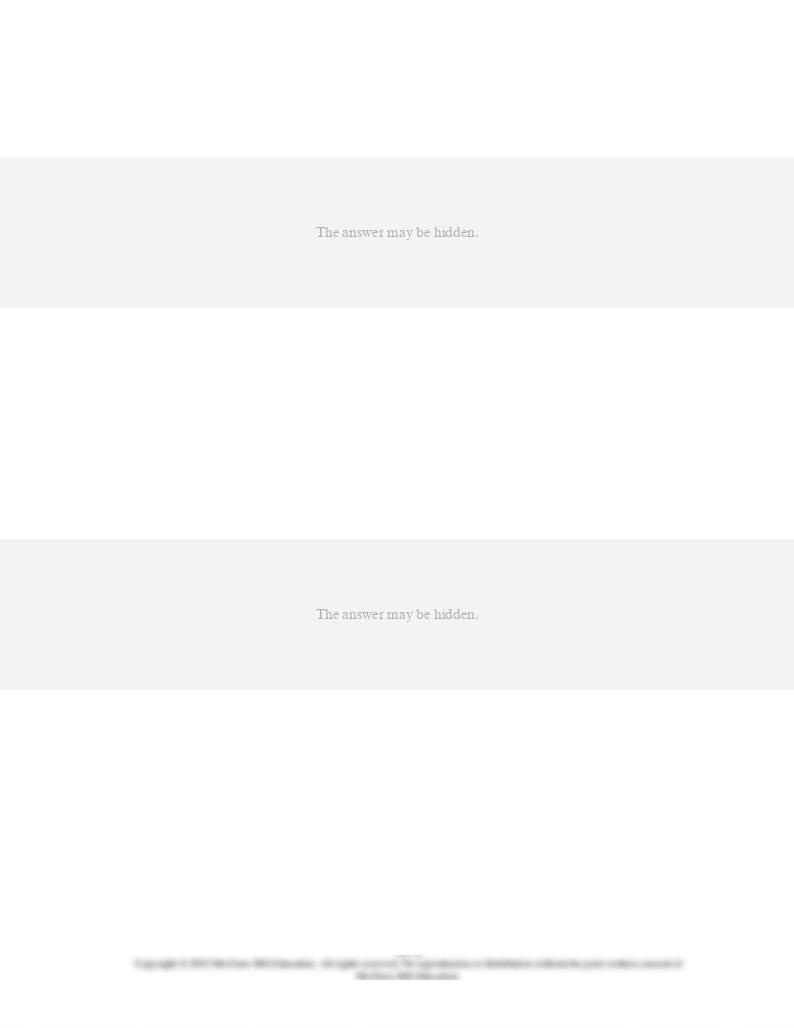
92.
The "shadow banking system" refers to:
AACSB: Reflective Thinking
Accessibility: Keyboard Navigation
Blooms: Remember
Difficulty: 1 Easy
Learning Objective: 32-06 Identify and explain the main factors that contributed to the financial crisis of 2007-2008.
Topic: Financial crisis of 2007 and 2008
93.
Which of the following statements is true about the high rate of mortgage defaults that
contributed to the financial crisis of 2007 and 2008?
AACSB: Reflective Thinking
Accessibility: Keyboard Navigation
Blooms: Understand
Difficulty: 2 Medium
Learning Objective: 32-06 Identify and explain the main factors that contributed to the financial crisis of 2007-2008.
Topic: Financial crisis of 2007 and 2008
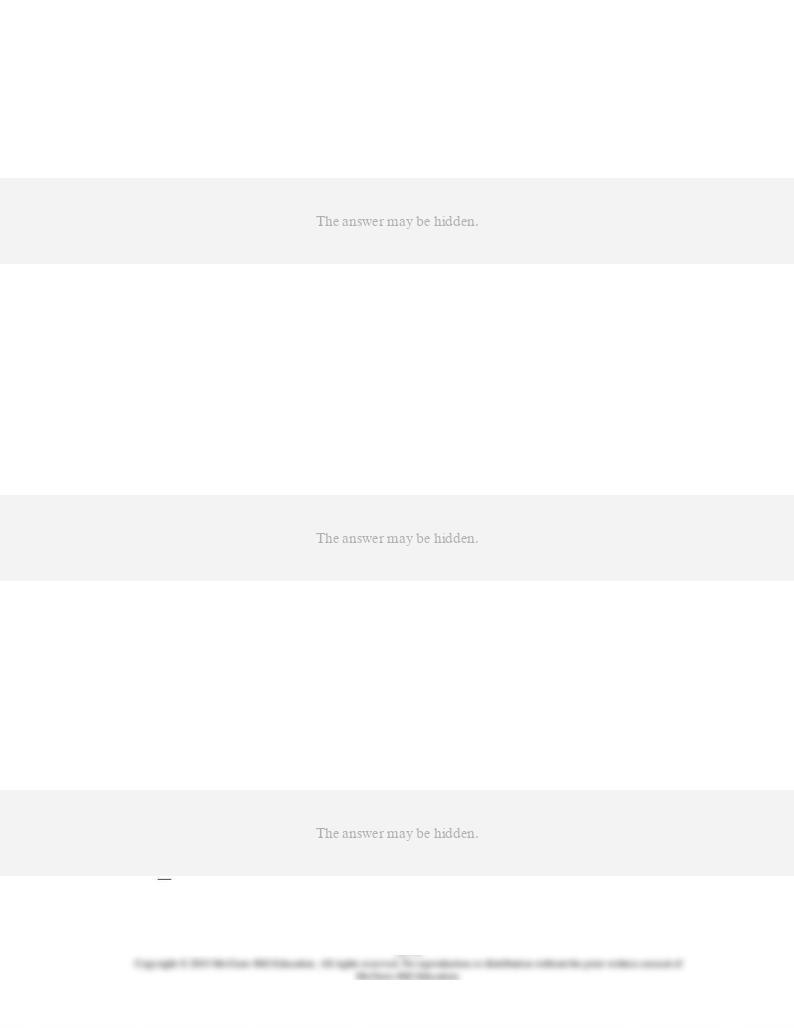
94.
Which of the following financial institutions declared bankruptcy as a result of the
financial crisis of 2007 and 2008?
AACSB: Reflective Thinking
Accessibility: Keyboard Navigation
Blooms: Remember
Difficulty: 1 Easy
Learning Objective: 32-06 Identify and explain the main factors that contributed to the financial crisis of 2007-2008.
Topic: Financial crisis of 2007 and 2008
95.
Which of the following financial institutions was acquired by Bank of America as a result
of the financial crisis of 2007 and 2008?
AACSB: Reflective Thinking
Accessibility: Keyboard Navigation
Blooms: Remember
Difficulty: 1 Easy
Learning Objective: 32-06 Identify and explain the main factors that contributed to the financial crisis of 2007-2008.
Topic: Financial crisis of 2007 and 2008
96.
TARP, created in 2008, stands for:
AACSB: Analytic

Accessibility: Keyboard Navigation
Blooms: Remember
Difficulty: 1 Easy
Learning Objective: 32-07 Discuss the actions of the U.S. Treasury and the Federal Reserve that helped keep the banking
and financial crisis of 2007-2008 from worsening.
Topic: Policy response to the financial crisis
97.
How much did the U.S. Congress allocate to the Troubled Asset Relief Program in 2008?
AACSB: Analytic
Accessibility: Keyboard Navigation
Blooms: Remember
Difficulty: 1 Easy
Learning Objective: 32-07 Discuss the actions of the U.S. Treasury and the Federal Reserve that helped keep the banking
and financial crisis of 2007-2008 from worsening.
Topic: Policy response to the financial crisis
98.
Some economists are concerned that the financial rescue provided by the TARP will
encourage financial investors and firms to take on greater risks in the future. This is an
example of:
A.
moral hazard.
B.
adverse selection.
AACSB: Reflective Thinking
Accessibility: Keyboard Navigation
Blooms: Understand
Difficulty: 2 Medium
Learning Objective: 32-07 Discuss the actions of the U.S. Treasury and the Federal Reserve that helped keep the banking
and financial crisis of 2007-2008 from worsening.
Topic: Policy response to the financial crisis
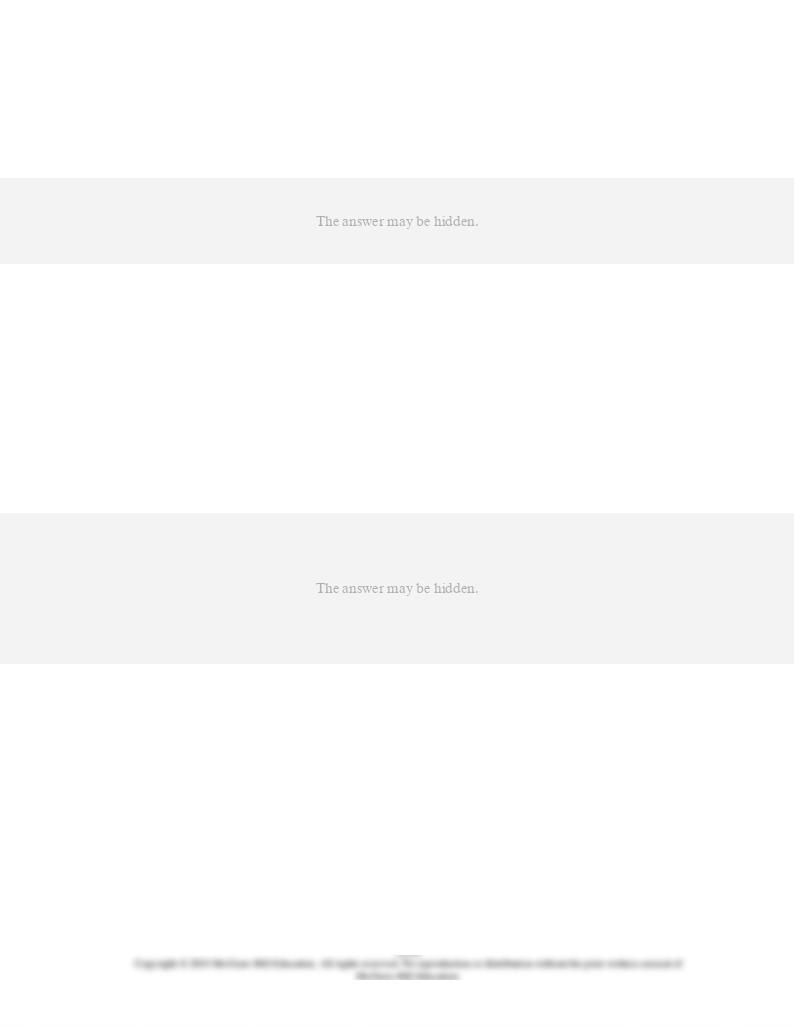
99.
Which of the following programs was
not
designed and implemented by the Federal
Reserve?
AACSB: Reflective Thinking
Accessibility: Keyboard Navigation
Blooms: Remember
Difficulty: 1 Easy
Learning Objective: 32-07 Discuss the actions of the U.S. Treasury and the Federal Reserve that helped keep the banking
and financial crisis of 2007-2008 from worsening.
Topic: Policy response to the financial crisis
100.
Which of the following statements is true as a result of Federal Reserve efforts to rescue
the financial industry from the financial crisis of 2007 and 2008?
AACSB: Reflective Thinking
Accessibility: Keyboard Navigation
Blooms: Remember
Difficulty: 1 Easy
Learning Objective: 32-07 Discuss the actions of the U.S. Treasury and the Federal Reserve that helped keep the banking
and financial crisis of 2007-2008 from worsening.
Topic: Policy response to the financial crisis
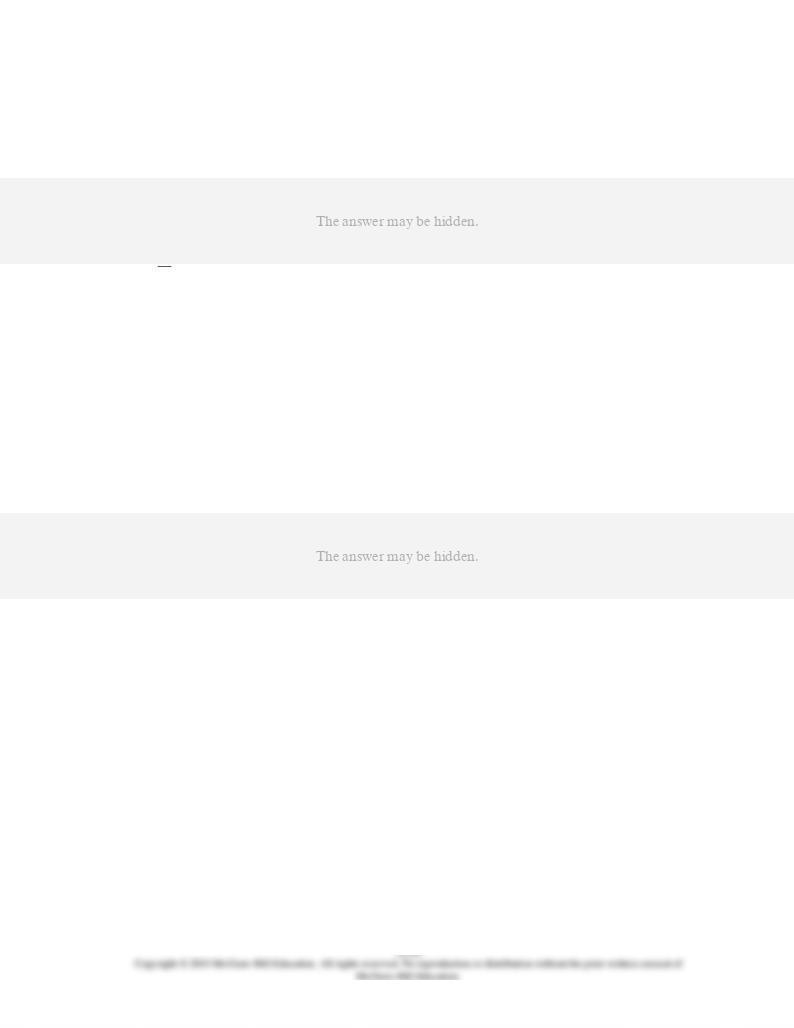
101.
Which of the following programs provides loans of U.S. securities to primary dealers for
one-month terms, in an effort to enhance liquidity in U.S. securities markets?
AACSB: Analytic
Accessibility: Keyboard Navigation
Blooms: Remember
Difficulty: 1 Easy
Learning Objective: 32-07 Discuss the actions of the U.S. Treasury and the Federal Reserve that helped keep the banking
and financial crisis of 2007-2008 from worsening.
Topic: Policy response to the financial crisis
102.
Which role of the Federal Reserve was expanded directly as a result of the PDCF and
TSLF?
AACSB: Reflective Thinking
Accessibility: Keyboard Navigation
Blooms: Understand
Difficulty: 2 Medium
Learning Objective: 32-07 Discuss the actions of the U.S. Treasury and the Federal Reserve that helped keep the banking
and financial crisis of 2007-2008 from worsening.
Topic: Policy response to the financial crisis

103.
Which of the following programs involves the Federal Reserve directly purchasing short-
term lending instruments from corporations?
AACSB: Analytic
Accessibility: Keyboard Navigation
Blooms: Remember
Difficulty: 1 Easy
Learning Objective: 32-07 Discuss the actions of the U.S. Treasury and the Federal Reserve that helped keep the banking
and financial crisis of 2007-2008 from worsening.
Topic: Policy response to the financial crisis
104.
What is the primary function of the Term Asset-Backed Securities Loan Facility?
AACSB: Analytic
Accessibility: Keyboard Navigation
Blooms: Understand
Difficulty: 2 Medium
Learning Objective: 32-07 Discuss the actions of the U.S. Treasury and the Federal Reserve that helped keep the banking
and financial crisis of 2007-2008 from worsening.
Topic: Policy response to the financial crisis

105.
The various lender-of-last-resort programs implemented by the Fed in response to the
financial crisis of 2007 and 2008:
AACSB: Reflective Thinking
Accessibility: Keyboard Navigation
Blooms: Understand
Difficulty: 2 Medium
Learning Objective: 32-07 Discuss the actions of the U.S. Treasury and the Federal Reserve that helped keep the banking
and financial crisis of 2007-2008 from worsening.
Topic: Policy response to the financial crisis
106.
Between September 2007 and September 2009:
AACSB: Reflective Thinking
Accessibility: Keyboard Navigation
Blooms: Remember
Difficulty: 1 Easy
Learning Objective: 32-08 Identify the main subsets of the financial services industry in the United States and provide
examples of some firms in each category.
Topic: Post-crisis U.S. financial services industry

107.
New York Life, Prudential, and Hartford are all primarily:
AACSB: Reflective Thinking
Accessibility: Keyboard Navigation
Blooms: Remember
Difficulty: 1 Easy
Learning Objective: 32-08 Identify the main subsets of the financial services industry in the United States and provide
examples of some firms in each category.
Topic: Post-crisis U.S. financial services industry
108.
Wells Fargo, J.P. Morgan Chase, and Citibank are all primarily:
AACSB: Reflective Thinking
Accessibility: Keyboard Navigation
Blooms: Remember
Difficulty: 1 Easy
Learning Objective: 32-08 Identify the main subsets of the financial services industry in the United States and provide
examples of some firms in each category.
Topic: Post-crisis U.S. financial services industry
109.
Charter One, Pentagon Federal Credit Union, and Boeing Employees Credit Union are all
primarily:
AACSB: Reflective Thinking
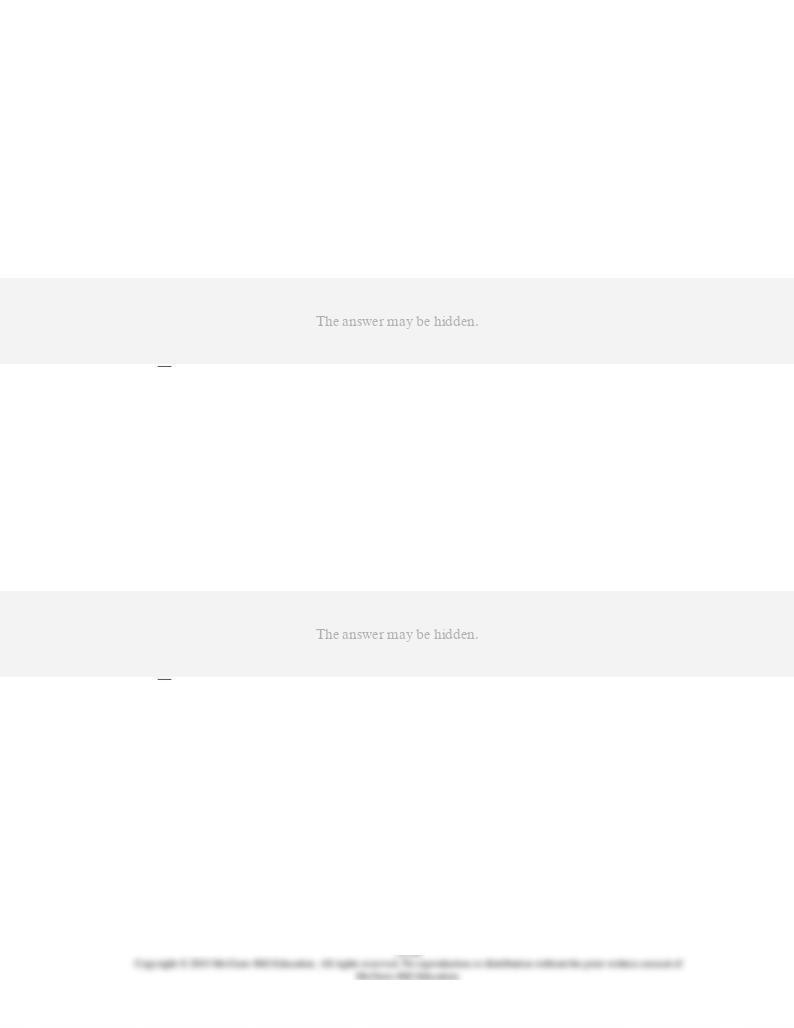
Accessibility: Keyboard Navigation
Blooms: Remember
Difficulty: 1 Easy
Learning Objective: 32-08 Identify the main subsets of the financial services industry in the United States and provide
examples of some firms in each category.
Topic: Post-crisis U.S. financial services industry
110.
TIAA-CREF, Teamsters' Union, and CalPERS are all primarily:
AACSB: Reflective Thinking
Accessibility: Keyboard Navigation
Blooms: Remember
Difficulty: 1 Easy
Learning Objective: 32-08 Identify the main subsets of the financial services industry in the United States and provide
examples of some firms in each category.
Topic: Post-crisis U.S. financial services industry
111.
Smith Barney, Charles Schwab, and Merrill Lynch are all primarily:
AACSB: Reflective Thinking
Accessibility: Keyboard Navigation
Blooms: Remember
Difficulty: 1 Easy
Learning Objective: 32-08 Identify the main subsets of the financial services industry in the United States and provide
examples of some firms in each category.
Topic: Post-crisis U.S. financial services industry
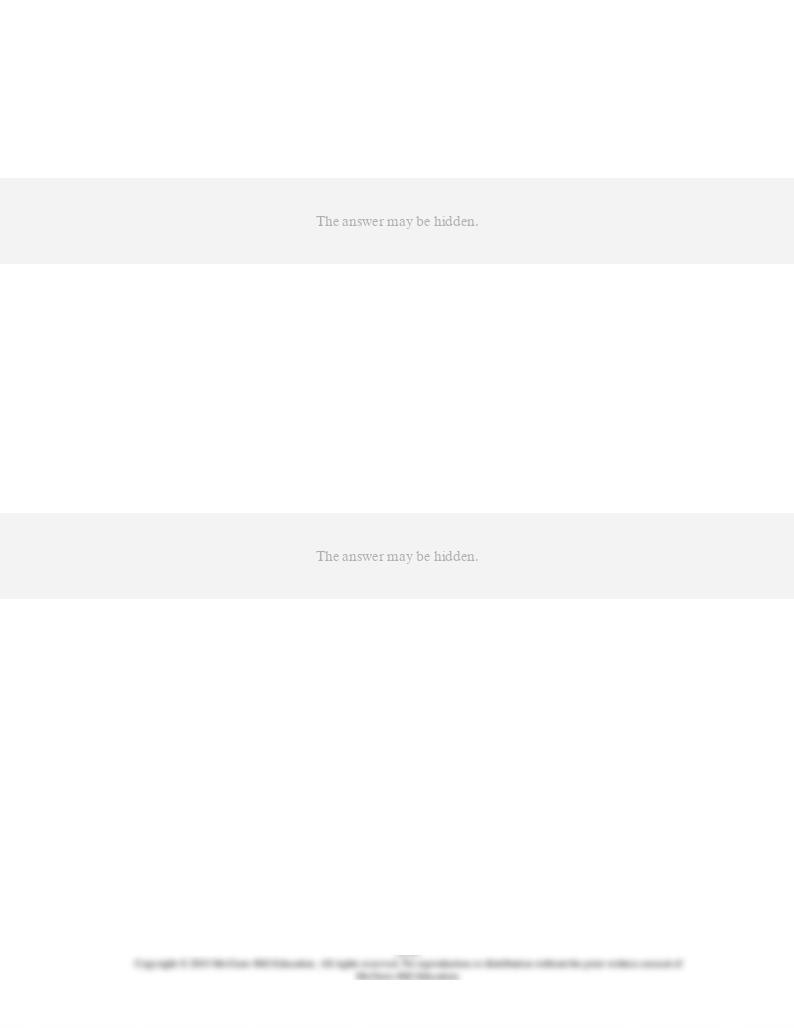
112.
In 2009, approximately how much of the money on deposit was held by the three largest
U.S. banks?
AACSB: Analytic
Accessibility: Keyboard Navigation
Blooms: Remember
Difficulty: 1 Easy
Learning Objective: 32-08 Identify the main subsets of the financial services industry in the United States and provide
examples of some firms in each category.
Topic: Post-crisis U.S. financial services industry
113.
Firms whose central business is to offer security advice and buy and sell individual stocks
and bonds for clients are known as:
AACSB: Analytic
Accessibility: Keyboard Navigation
Blooms: Remember
Difficulty: 1 Easy
Learning Objective: 32-08 Identify the main subsets of the financial services industry in the United States and provide
examples of some firms in each category.
Topic: Post-crisis U.S. financial services industry

114.
Firms whose central business is providing individual account shares of a group of stocks,
bonds, or both are known as:
AACSB: Analytic
Accessibility: Keyboard Navigation
Blooms: Remember
Difficulty: 1 Easy
Learning Objective: 32-08 Identify the main subsets of the financial services industry in the United States and provide
examples of some firms in each category.
Topic: Post-crisis U.S. financial services industry
115.
Which of these pairs of financial institutions are most alike in terms of their main lines of
business?
AACSB: Analytic
Accessibility: Keyboard Navigation
Blooms: Understand
Difficulty: 2 Medium
Learning Objective: 32-08 Identify the main subsets of the financial services industry in the United States and provide
examples of some firms in each category.
Topic: Post-crisis U.S. financial services industry
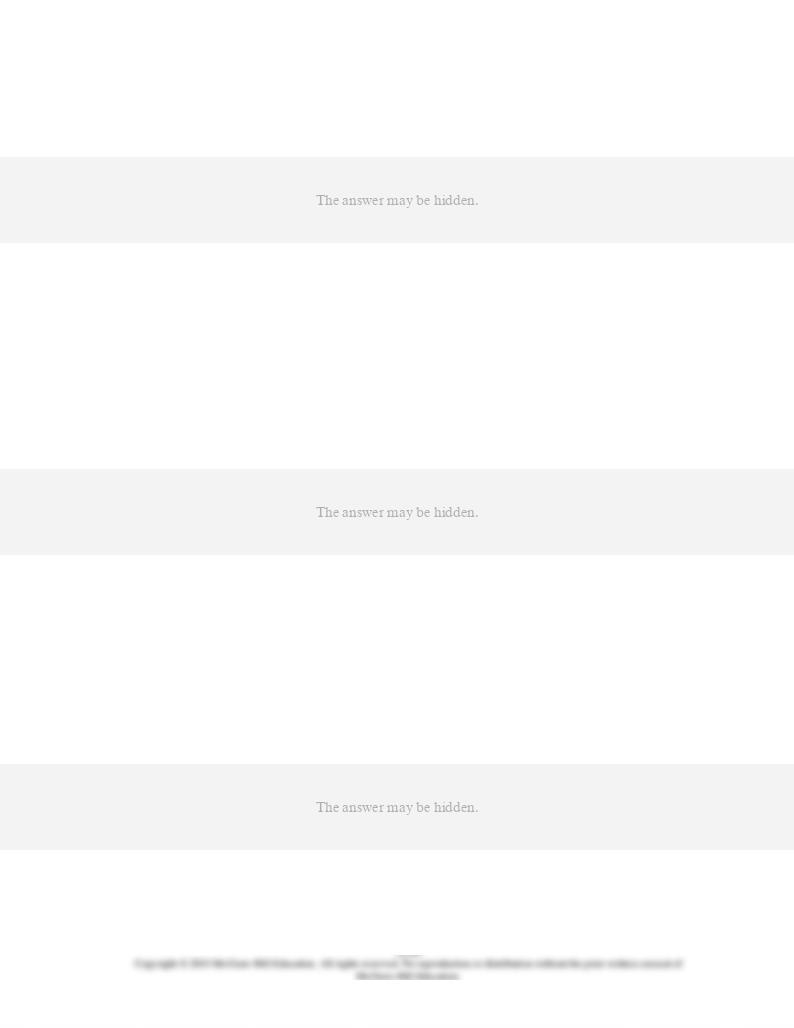
116.
The Federal Deposit Insurance Corporation (FDIC) insures deposits up to $250,000 in:
AACSB: Reflective Thinking
Accessibility: Keyboard Navigation
Blooms: Remember
Difficulty: 1 Easy
Learning Objective: 32-08 Identify the main subsets of the financial services industry in the United States and provide
examples of some firms in each category.
Topic: Post-crisis U.S. financial services industry
117.
(Consider This) Credits cards are:
AACSB: Analytic
Accessibility: Keyboard Navigation
Blooms: Remember
Difficulty: 1 Easy
Learning Objective: 32-02 List and describe the components of the U.S. money supply.
Topic: Components of the money supply
118.
(Consider This) Which of the following is not part of the
M
2 money supply?
AACSB: Analytic
Accessibility: Keyboard Navigation
Blooms: Remember
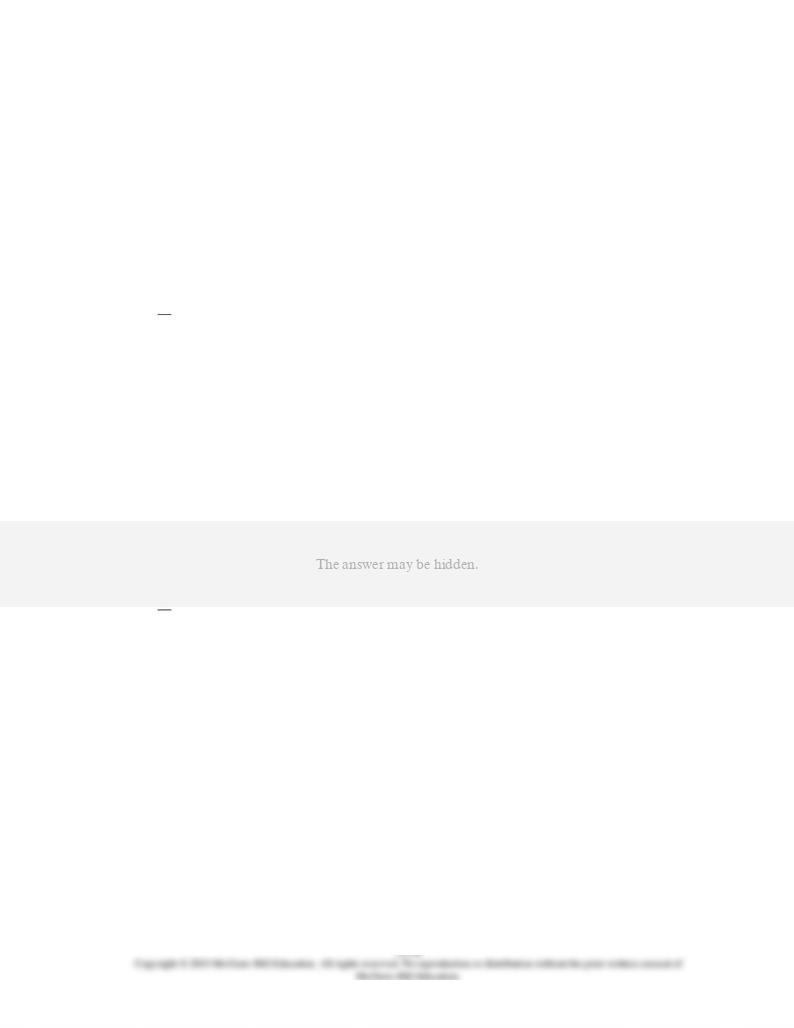
Difficulty: 1 Easy
Learning Objective: 32-02 List and describe the components of the U.S. money supply.
Topic: Components of the money supply
119.
(Consider This) Credit card balances are:
A.
a component of
M
1.
B.
a component of
M
2 but not of
M
1.
C.
a component of
M
1 but not of
M
2.
D.
not a component of
M
1 or
M
2.
AACSB: Analytic
Accessibility: Keyboard Navigation
Blooms: Remember
Difficulty: 1 Easy
Learning Objective: 32-02 List and describe the components of the U.S. money supply.
Topic: Components of the money supply
120.
(Last Word) The Glass-Steagall Act of 1933:
AACSB: Reflective Thinking
Accessibility: Keyboard Navigation
Blooms: Remember
Difficulty: 1 Easy
Learning Objective: 32-06 Identify and explain the main factors that contributed to the financial crisis of 2007-2008.
Topic: Financial crisis of 2007 and 2008
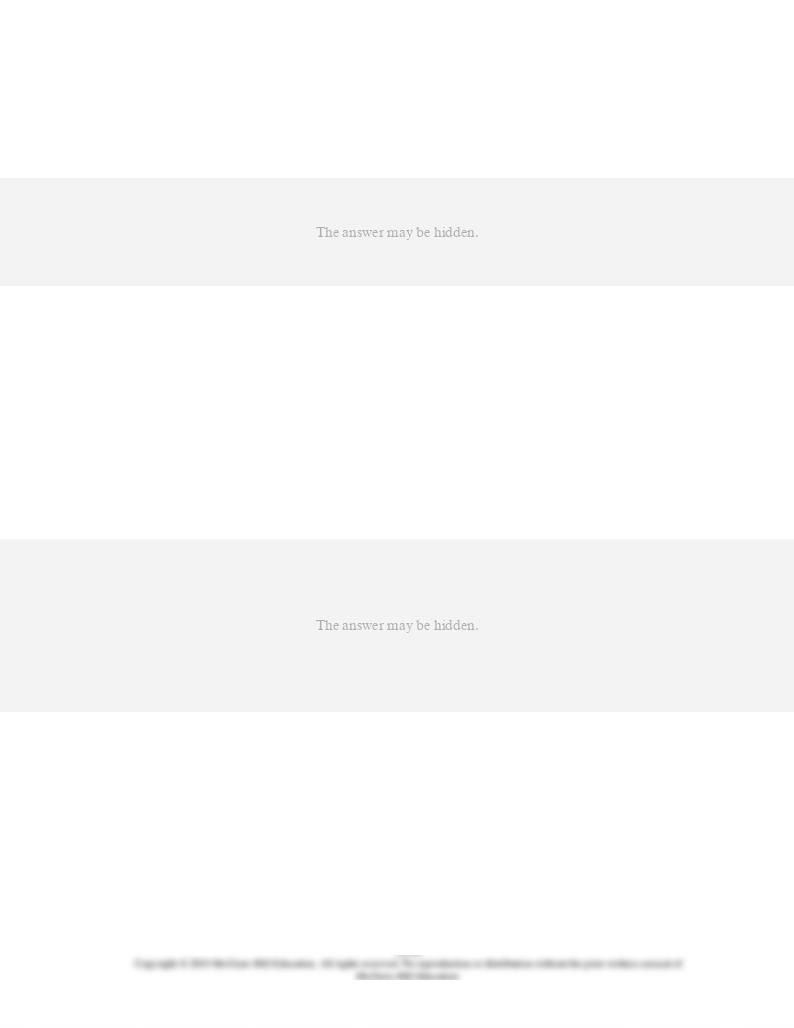
121.
(Last Word) After years of aiding drug cartels, mobsters, and terrorist groups laundering
money, HSBC bank was:
AACSB: Reflective Thinking
Accessibility: Keyboard Navigation
Blooms: Remember
Difficulty: 1 Easy
Learning Objective: 32-06 Identify and explain the main factors that contributed to the financial crisis of 2007-2008.
Topic: Financial crisis of 2007 and 2008
122.
(Last Word) The Assistant U.S. Attorney General in charge of prosecuting financial crimes
did which of the following in response to HSBC bank's years of money laundering and
helping firms and individuals cheat on their taxes?
AACSB: Reflective Thinking
Accessibility: Keyboard Navigation
Blooms: Understand
Difficulty: 2 Medium
Learning Objective: 32-06 Identify and explain the main factors that contributed to the financial crisis of 2007-2008.
Topic: Financial crisis of 2007 and 2008

True / False Questions
123.
The
M
2 money supply is larger than the
M
1 money supply.
AACSB: Reflective Thinking
Accessibility: Keyboard Navigation
Blooms: Remember
Difficulty: 1 Easy
Learning Objective: 32-02 List and describe the components of the U.S. money supply.
Topic: Components of the money supply
124.
The
M
2 money supply may be larger or smaller than the
M
1 money supply depending on
the size of small-denominated time deposit balances and money market mutual fund
balances held by individuals.
AACSB: Reflective Thinking
Accessibility: Keyboard Navigation
Blooms: Understand
Difficulty: 2 Medium
Learning Objective: 32-02 List and describe the components of the U.S. money supply.
Topic: Components of the money supply
125.
Checkable deposits held in saving and loan institutions, mutual savings banks, and credit
unions are part of the
M
1 definition of the money supply.
AACSB: Analytic
Accessibility: Keyboard Navigation
Blooms: Remember
Difficulty: 1 Easy
Learning Objective: 32-02 List and describe the components of the U.S. money supply.
Topic: Components of the money supply
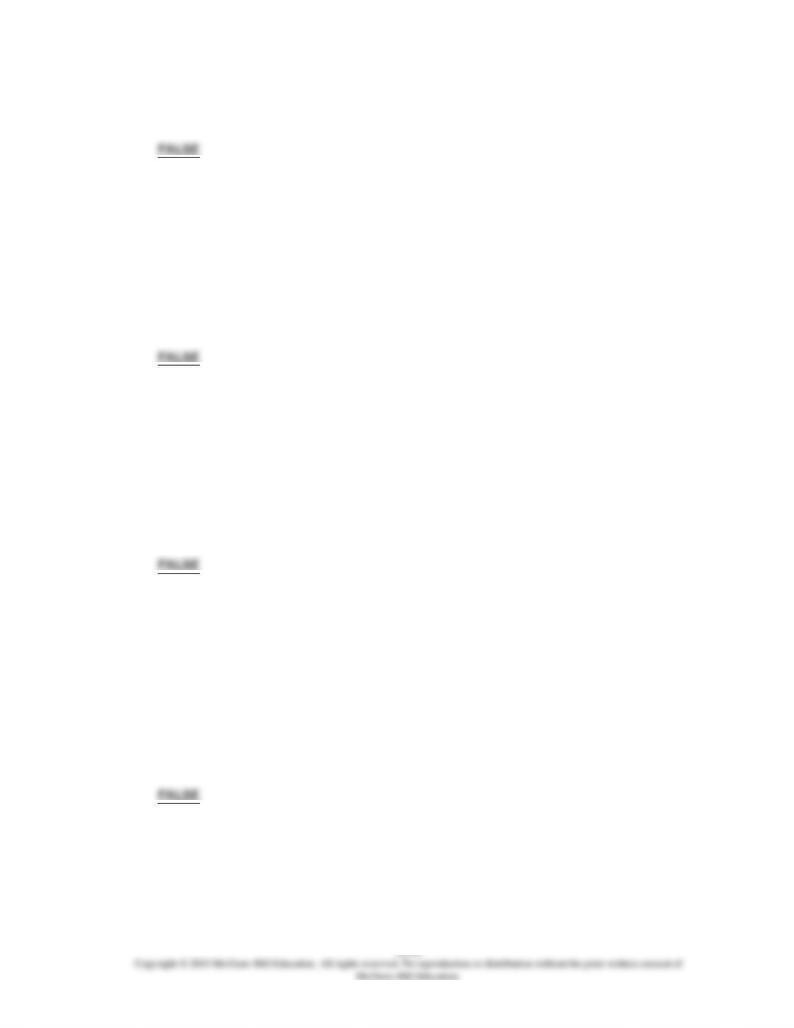
126.
Currency and coins held by banks are part of the
M
1 definition of money supply.
AACSB: Analytic
Accessibility: Keyboard Navigation
Blooms: Remember
Difficulty: 1 Easy
Learning Objective: 32-02 List and describe the components of the U.S. money supply.
Topic: Components of the money supply
127.
Gold backs the U.S. money supply.
AACSB: Analytic
Accessibility: Keyboard Navigation
Blooms: Remember
Difficulty: 1 Easy
Learning Objective: 32-03 Describe what "backs" the money supply; making us willing to accept it as payment.
Topic: What "backs" the money supply?
128.
The 12 Federal Reserve Banks are governmentally owned but privately controlled.
AACSB: Reflective Thinking
Accessibility: Keyboard Navigation
Blooms: Remember
Difficulty: 1 Easy
Learning Objective: 32-04 Discuss the makeup of the Federal Reserve and its relationship to banks and thrifts.
Topic: Federal Reserve and the banking system
129.
The U.S. Treasury is the only agency authorized to put money into circulation in the U.S.
economy.
AACSB: Reflective Thinking
Accessibility: Keyboard Navigation
Blooms: Remember
Difficulty: 1 Easy
Learning Objective: 32-05 Identify the functions and responsibilities of the Federal Reserve and explain why Fed
independence is important.
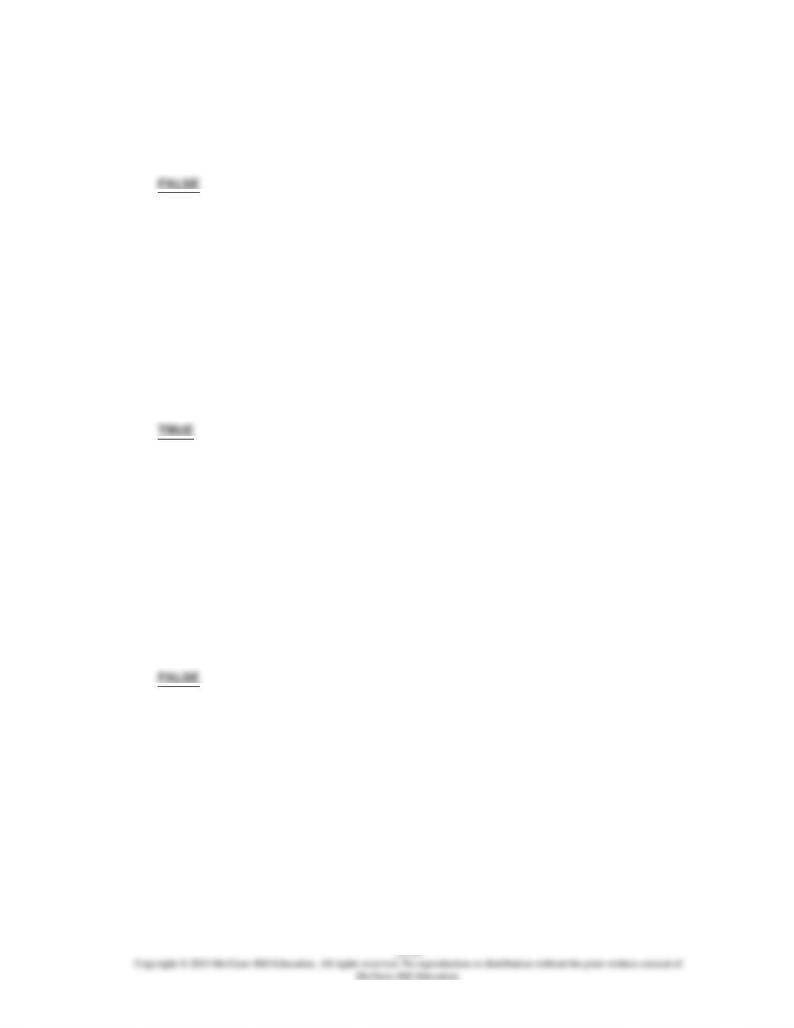
Topic: Fed functions, responsibilities, and independence
130.
Thrifts are known as "banker's banks" because they lend money to commercial banks.
AACSB: Analytic
Accessibility: Keyboard Navigation
Blooms: Remember
Difficulty: 1 Easy
Learning Objective: 32-05 Identify the functions and responsibilities of the Federal Reserve and explain why Fed
independence is important.
Topic: Fed functions, responsibilities, and independence
131.
As of March 2009, the federal government and the Federal Reserve had spent $170 billion
to keep AIG financially afloat.
AACSB: Analytic
Accessibility: Keyboard Navigation
Blooms: Remember
Difficulty: 1 Easy
Learning Objective: 32-07 Discuss the actions of the U.S. Treasury and the Federal Reserve that helped keep the banking
and financial crisis of 2007-2008 from worsening.
Topic: Policy response to the financial crisis
132.
Subprime mortgage loans are so named because the rates charged are below the prime
interest rate.
AACSB: Analytic
Accessibility: Keyboard Navigation
Blooms: Remember
Difficulty: 1 Easy
Learning Objective: 32-06 Identify and explain the main factors that contributed to the financial crisis of 2007-2008.
Topic: Financial crisis of 2007 and 2008
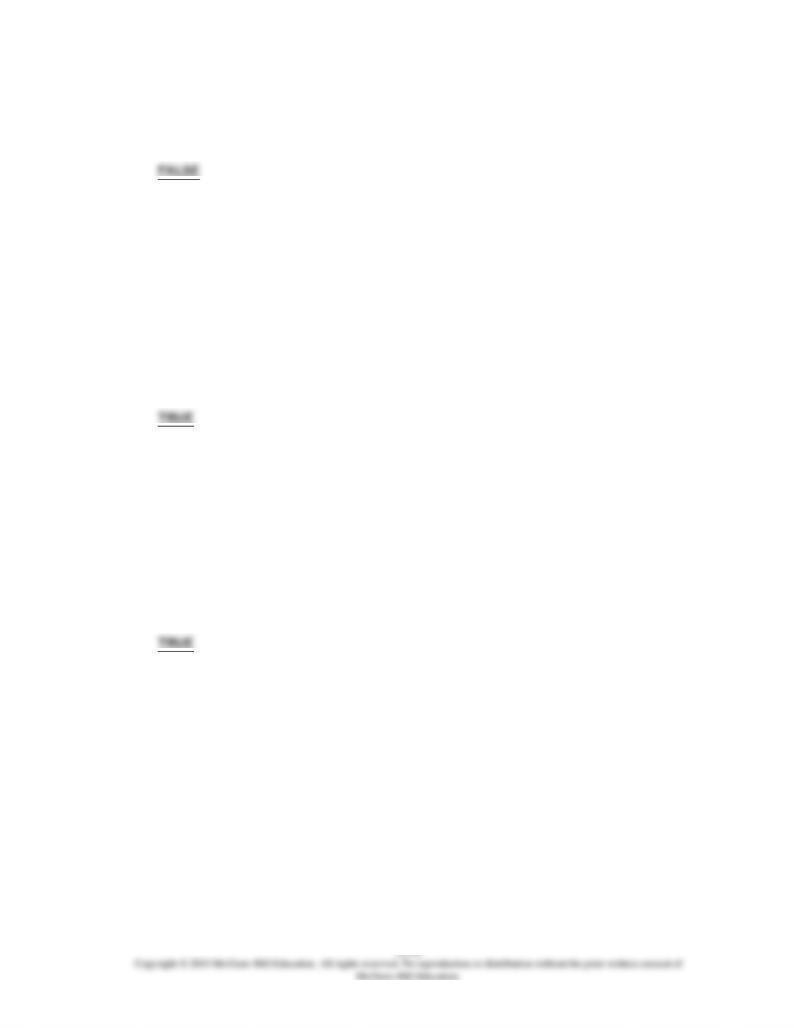
133.
The programs enacted to bail out the financial system from crisis in 2007 and 2008 helped
alleviate the moral hazard problem in the financial industry.
AACSB: Reflective Thinking
Accessibility: Keyboard Navigation
Blooms: Understand
Difficulty: 2 Medium
Learning Objective: 32-07 Discuss the actions of the U.S. Treasury and the Federal Reserve that helped keep the banking
and financial crisis of 2007-2008 from worsening.
Topic: Policy response to the financial crisis
134.
As part of its response to the financial crisis of 2007 and 2008, Federal Reserve Banks
began paying interest on reserve deposits.
AACSB: Reflective Thinking
Accessibility: Keyboard Navigation
Blooms: Remember
Difficulty: 1 Easy
Learning Objective: 32-07 Discuss the actions of the U.S. Treasury and the Federal Reserve that helped keep the banking
and financial crisis of 2007-2008 from worsening.
Topic: Policy response to the financial crisis
135.
Fidelity, Putnam, Janus, and Vanguard are examples of mutual fund companies.
AACSB: Reflective Thinking
Accessibility: Keyboard Navigation
Blooms: Remember
Difficulty: 1 Easy
Learning Objective: 32-08 Identify the main subsets of the financial services industry in the United States and provide
examples of some firms in each category.
Topic: Post-crisis U.S. financial services industry
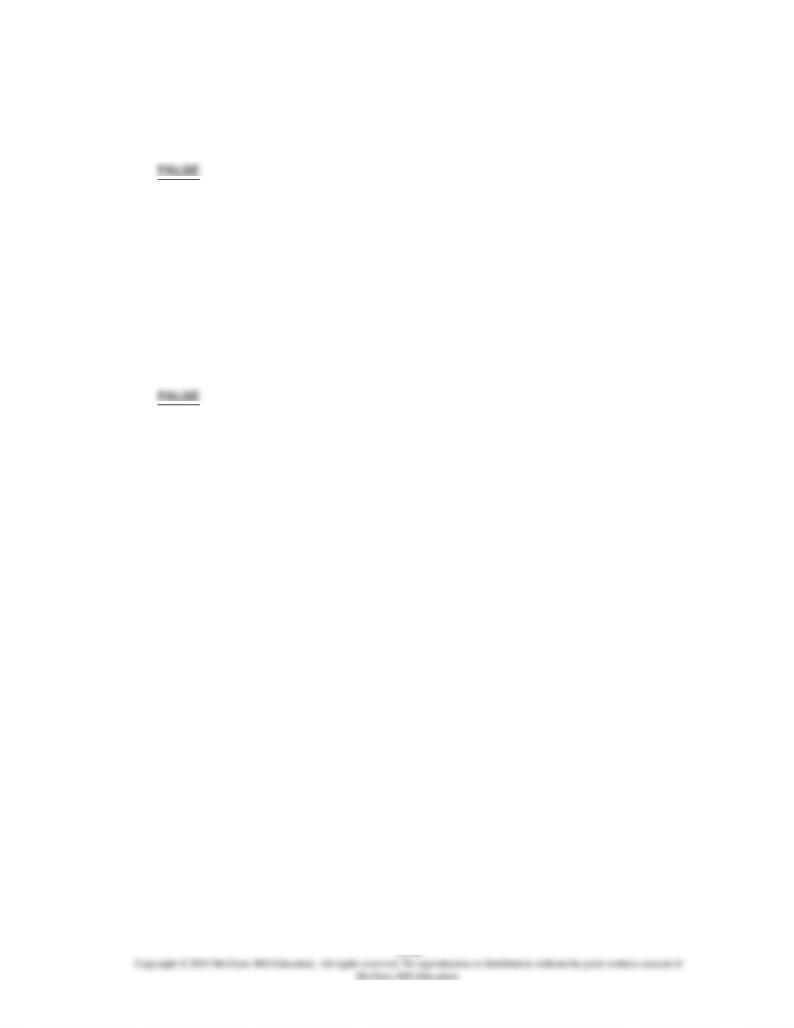
136.
Laws passed in the late 1990s restricted the activities of financial firms to narrowly
defined services they could provide, prompting the financial crisis of 2007 and 2008.
AACSB: Reflective Thinking
Accessibility: Keyboard Navigation
Blooms: Remember
Difficulty: 1 Easy
Learning Objective: 32-08 Identify the main subsets of the financial services industry in the United States and provide
examples of some firms in each category.
Topic: Post-crisis U.S. financial services industry
137.
(Consider This) Credit cards are defined as money because they facilitate transactions.
AACSB: Reflective Thinking
Accessibility: Keyboard Navigation
Blooms: Understand
Difficulty: 2 Medium
Learning Objective: 32-02 List and describe the components of the U.S. money supply.
Topic: Components of the money supply